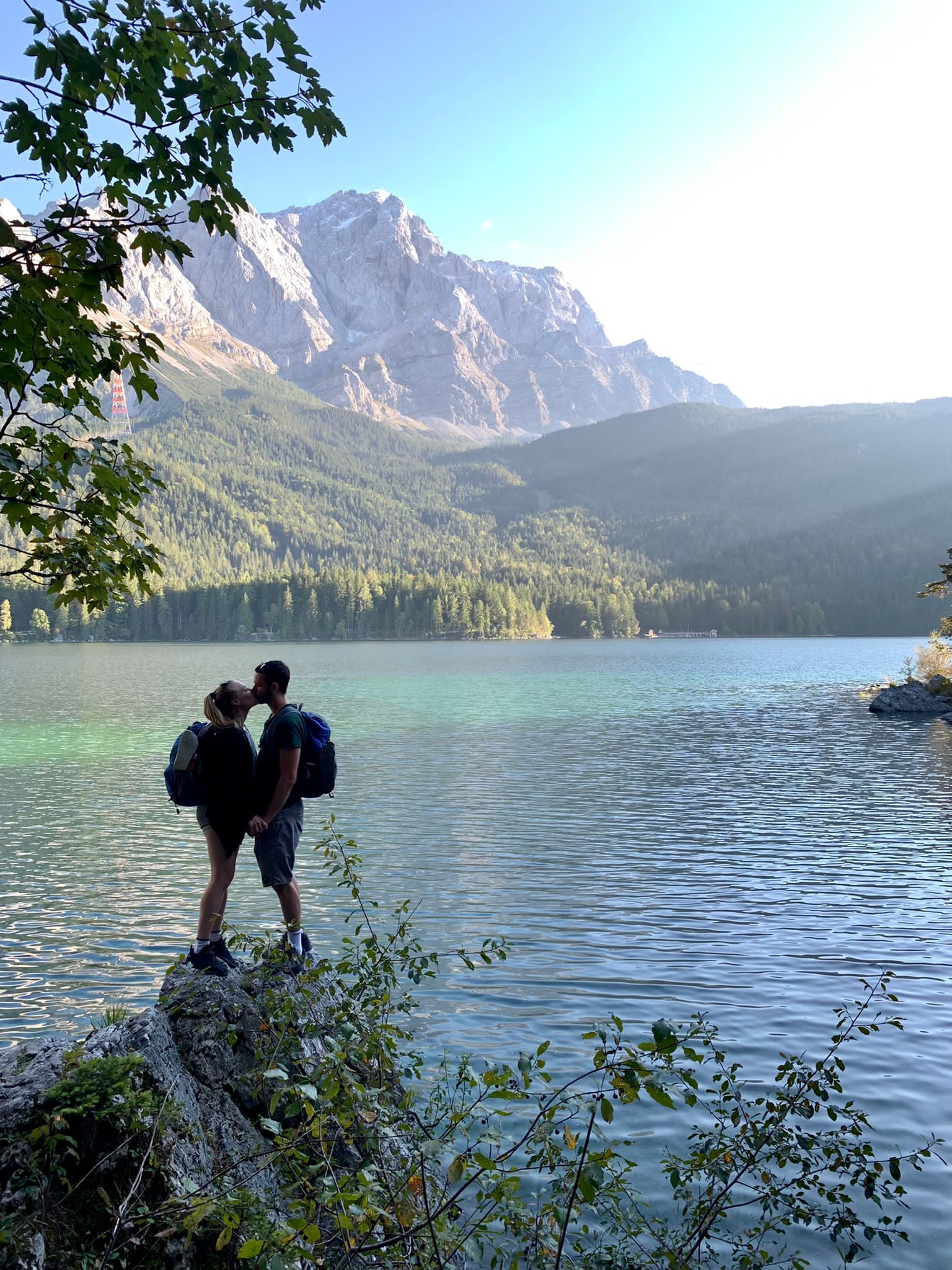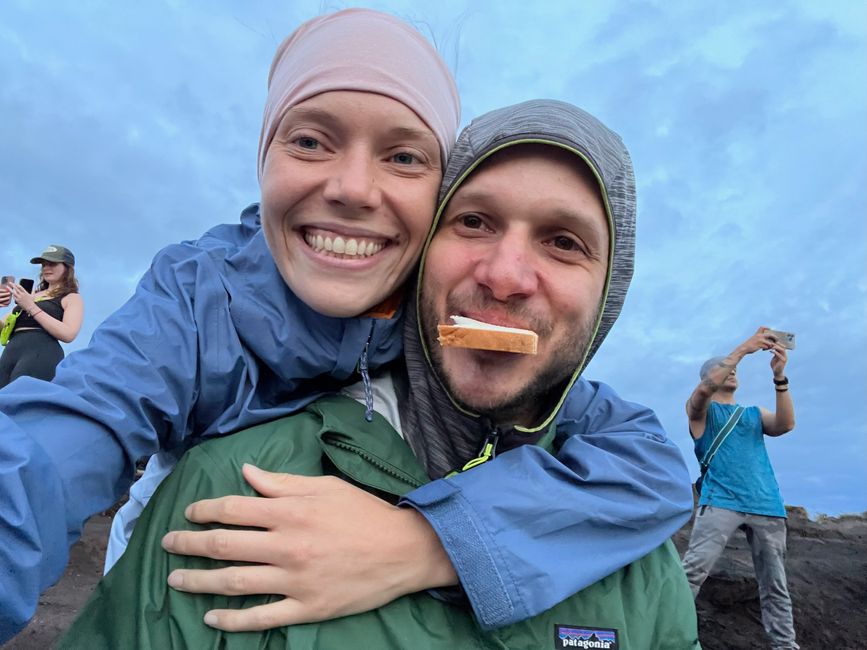San Pedro de Atacama
प्रकाशित: 04.07.2023
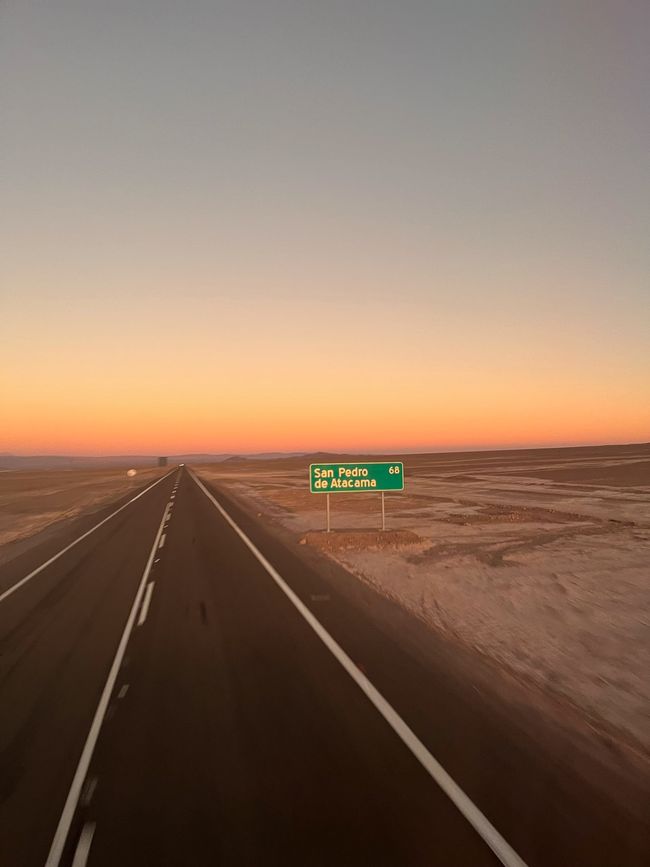
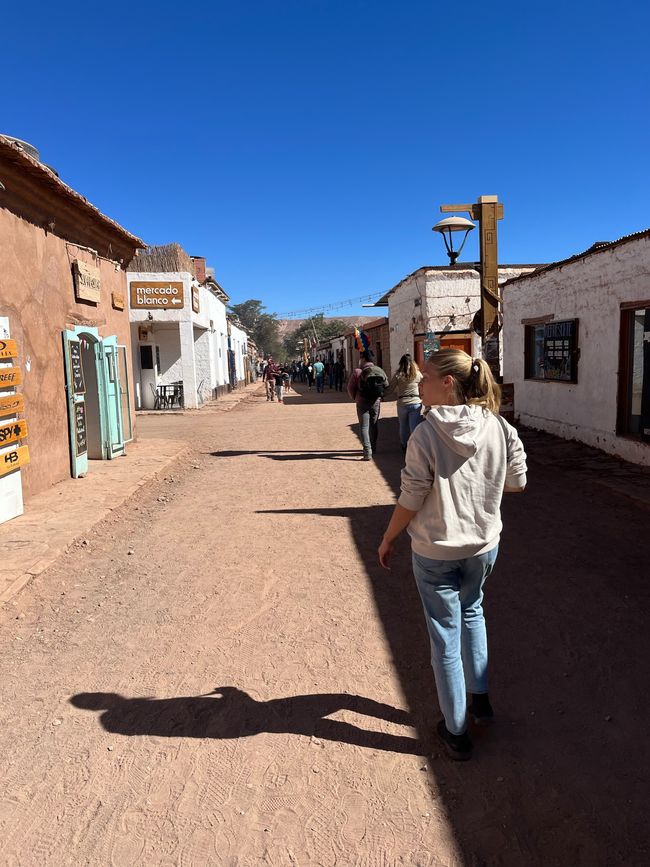
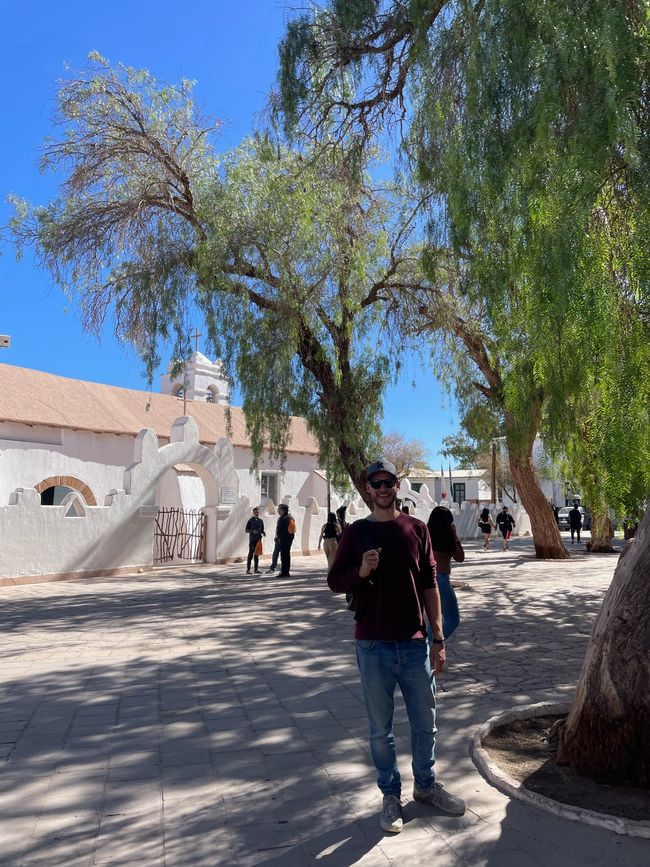
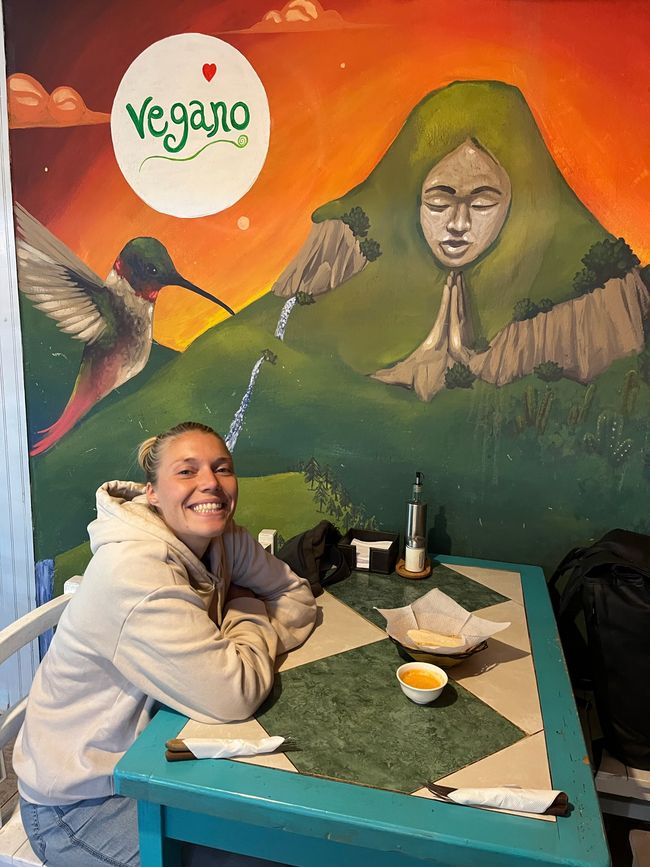
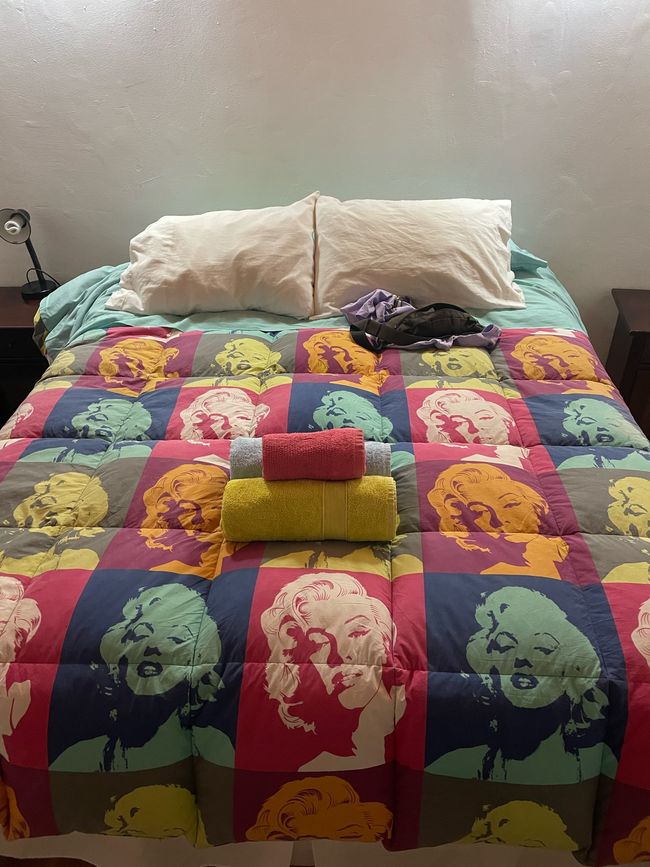
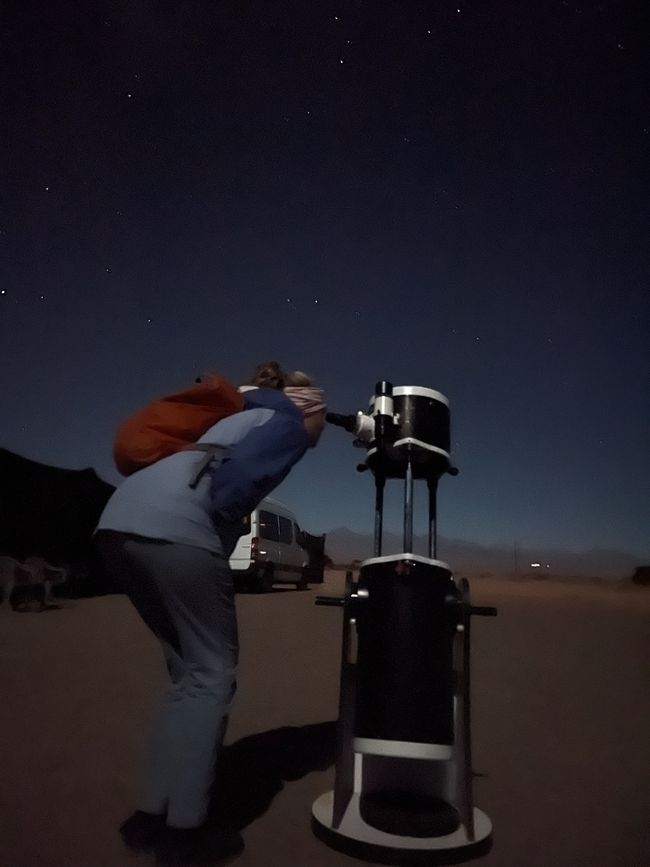
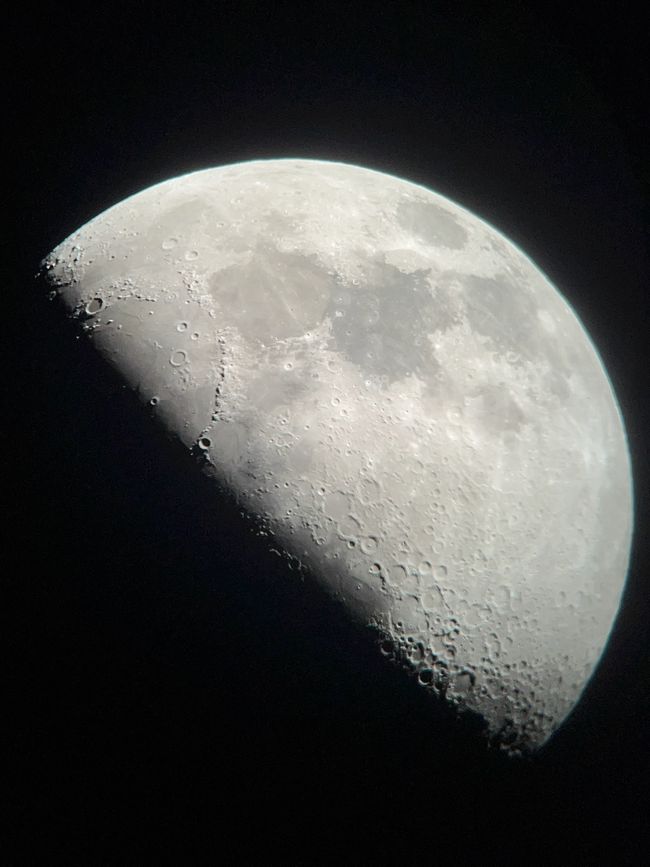
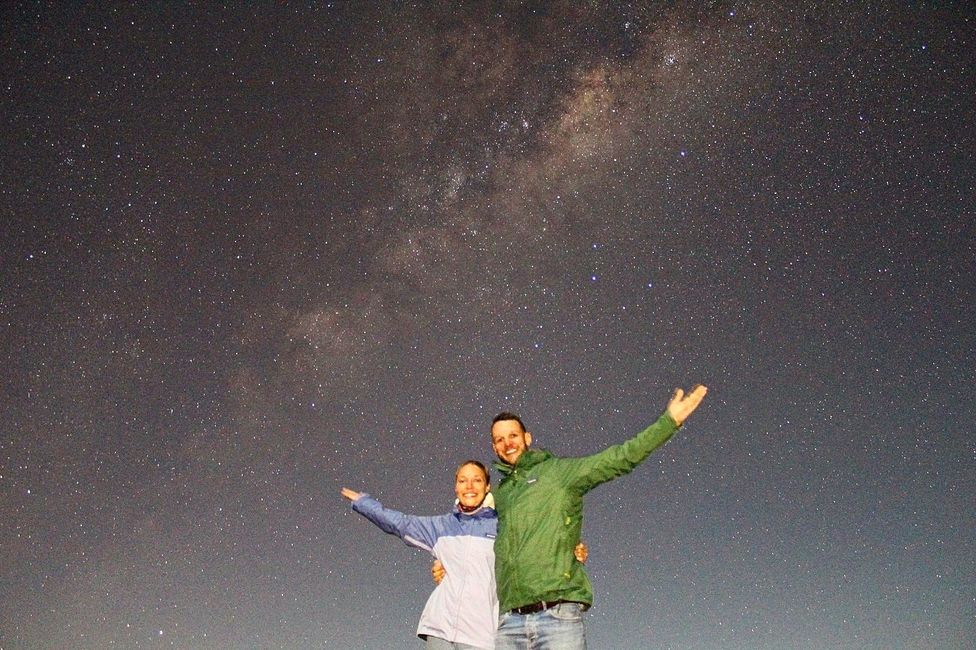
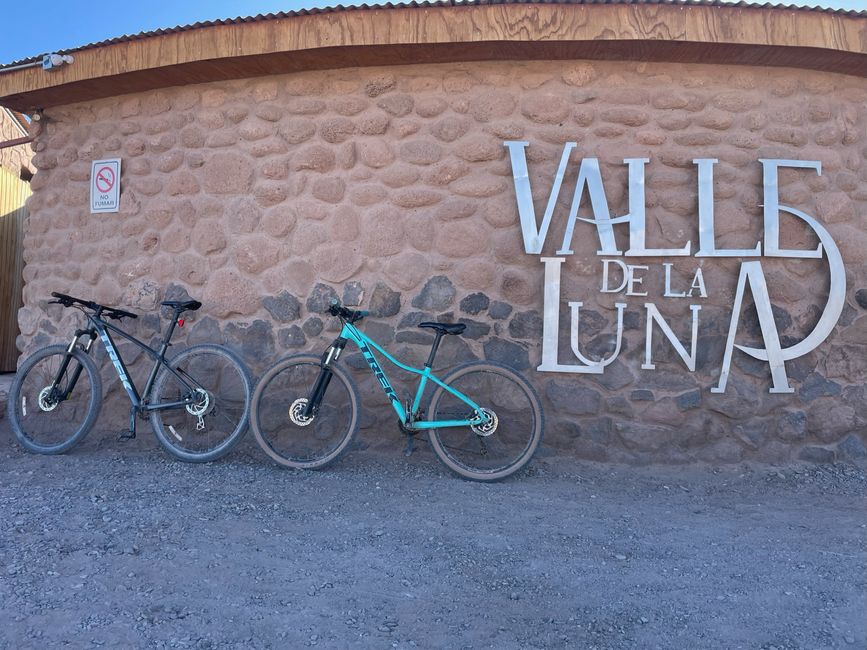
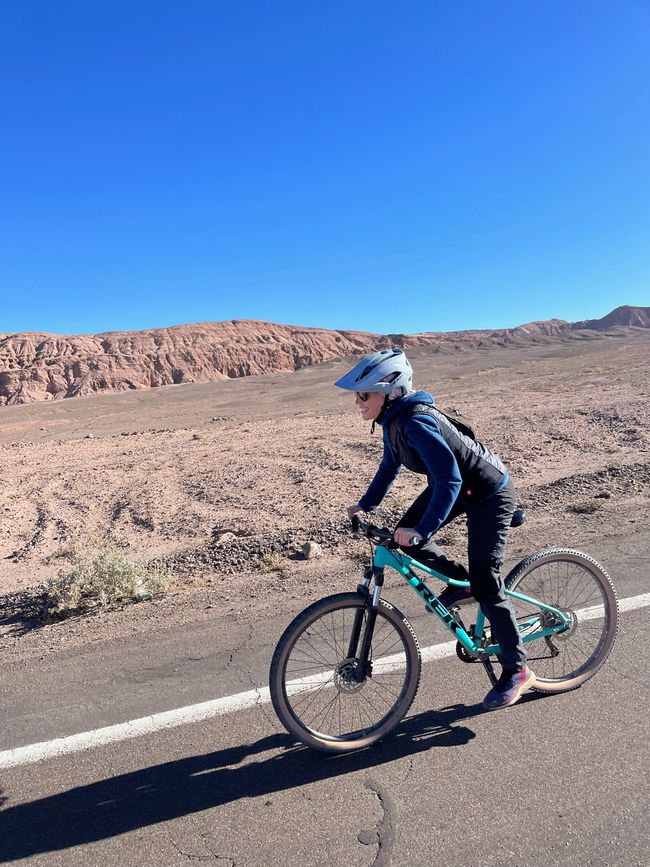
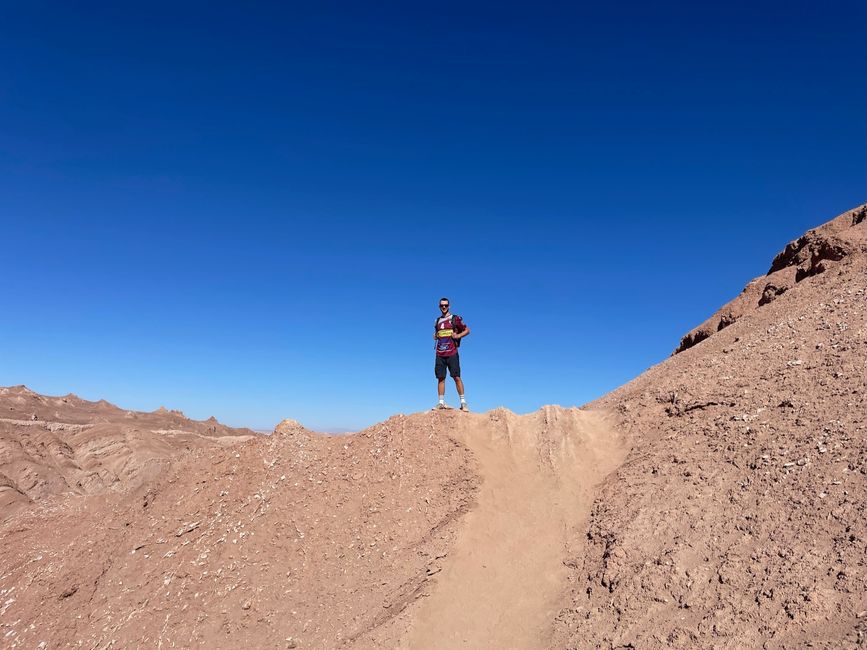
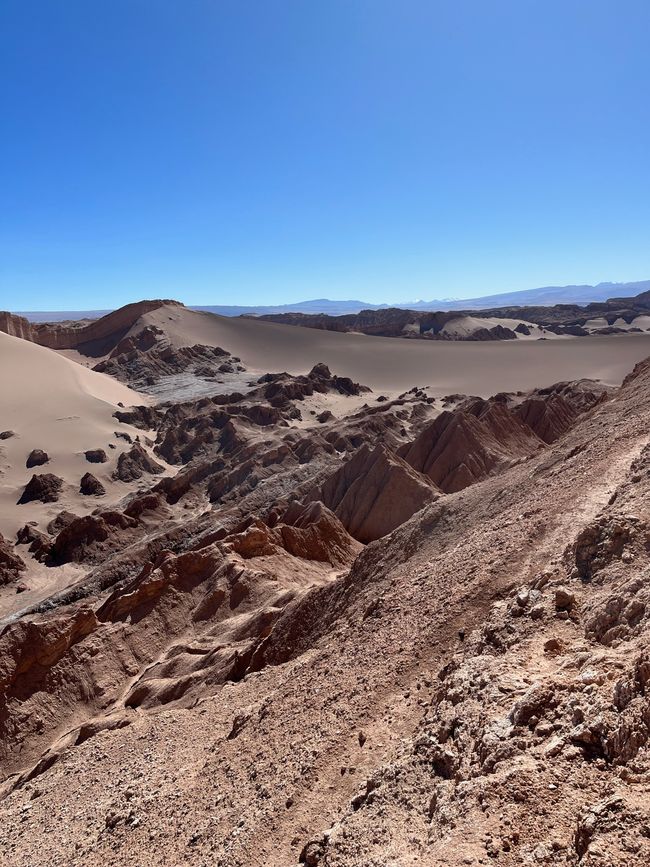
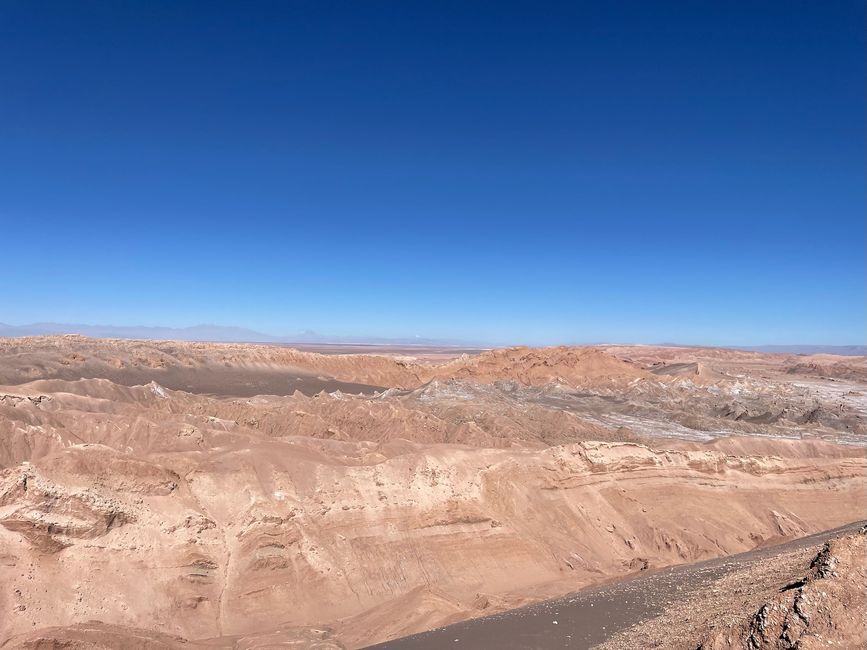
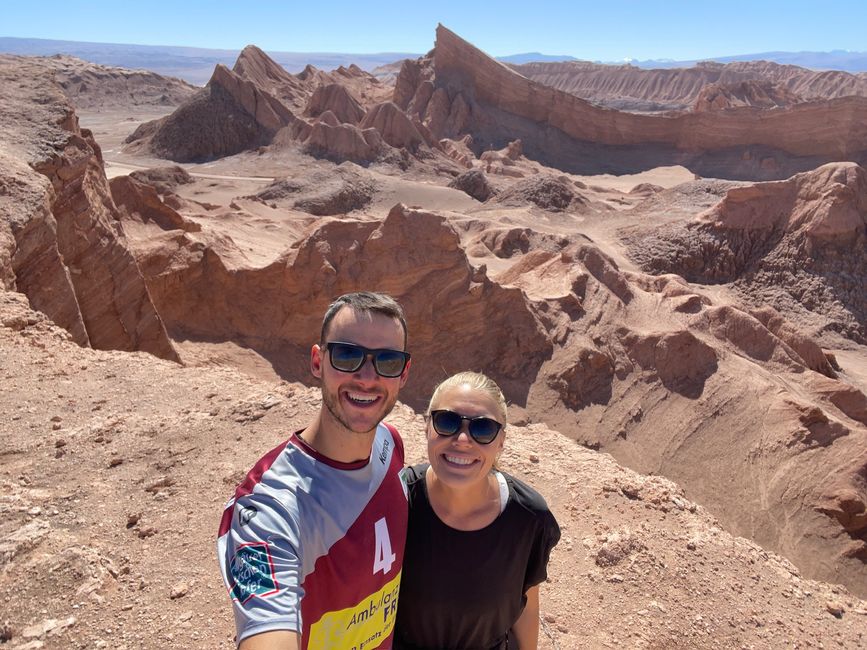
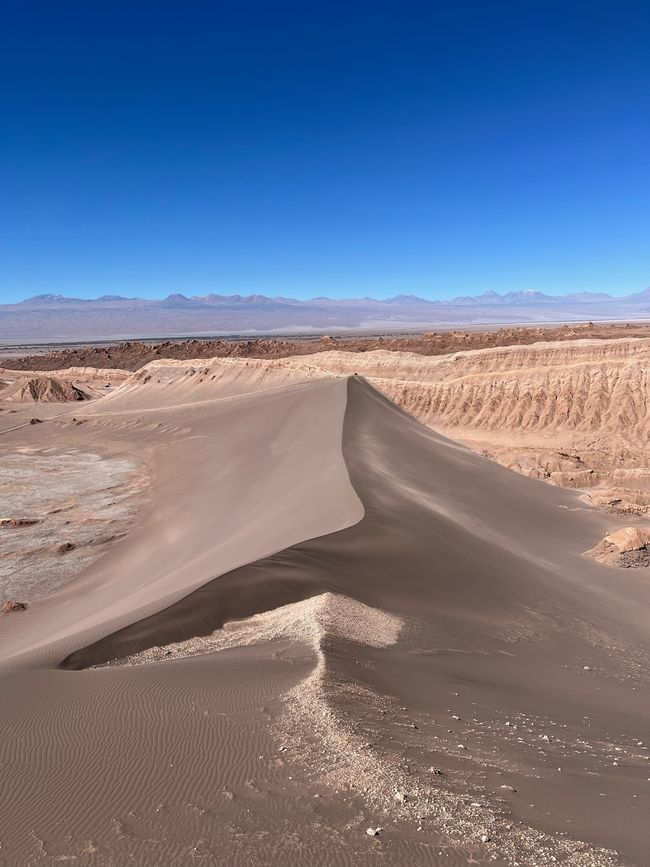
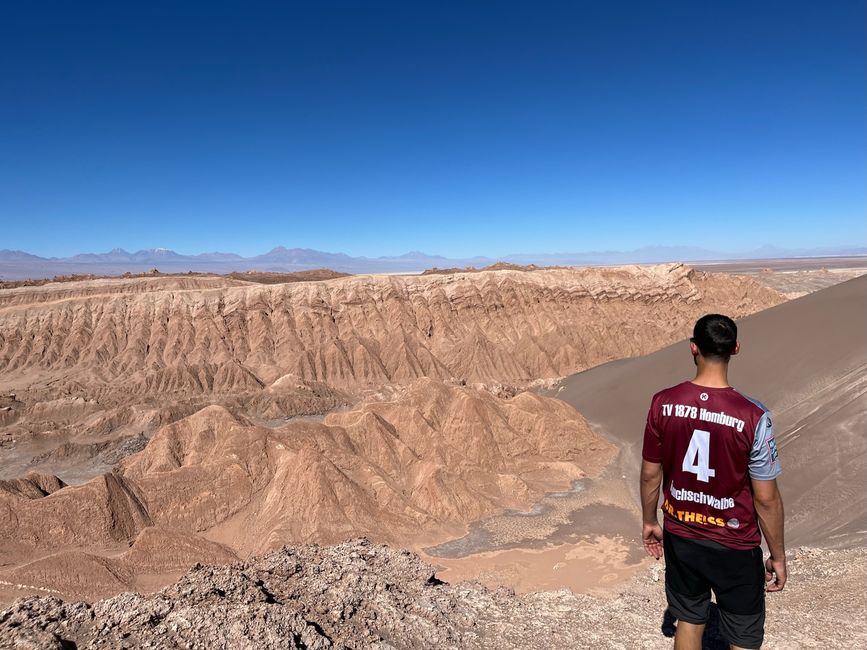
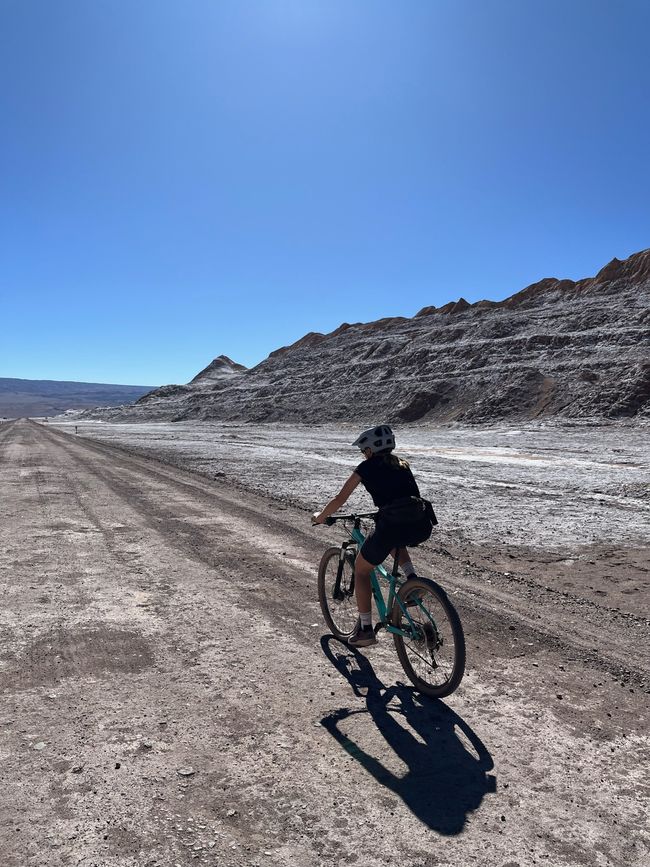
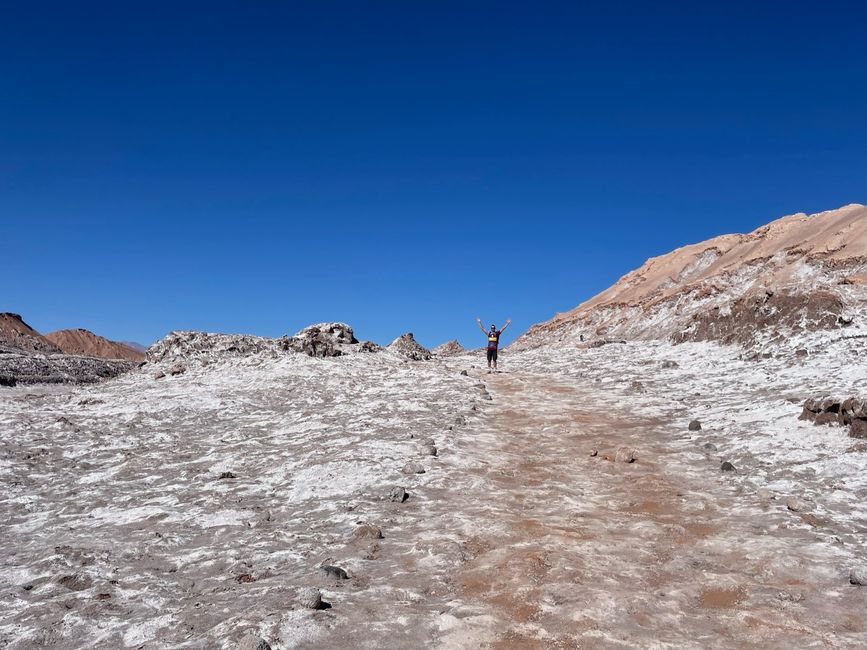
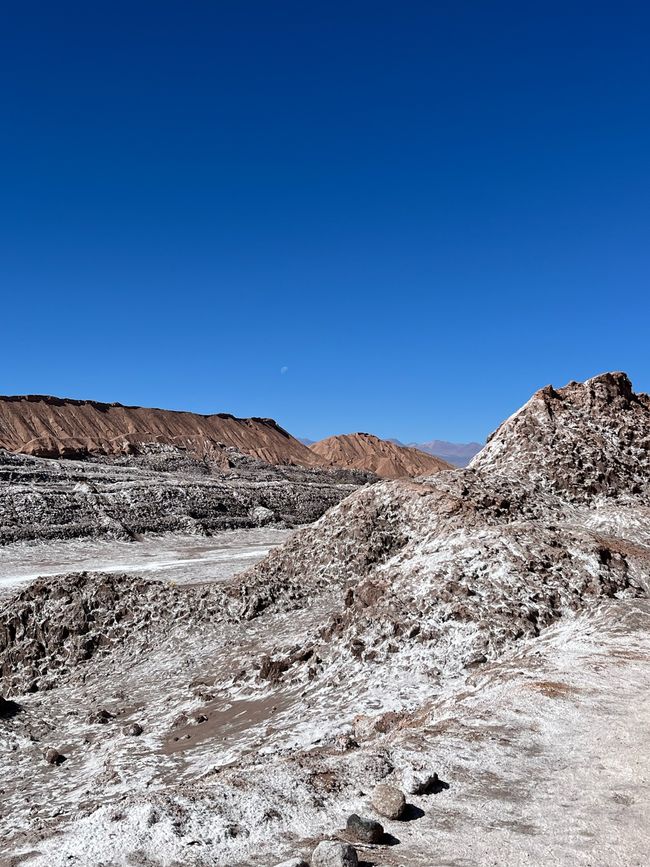
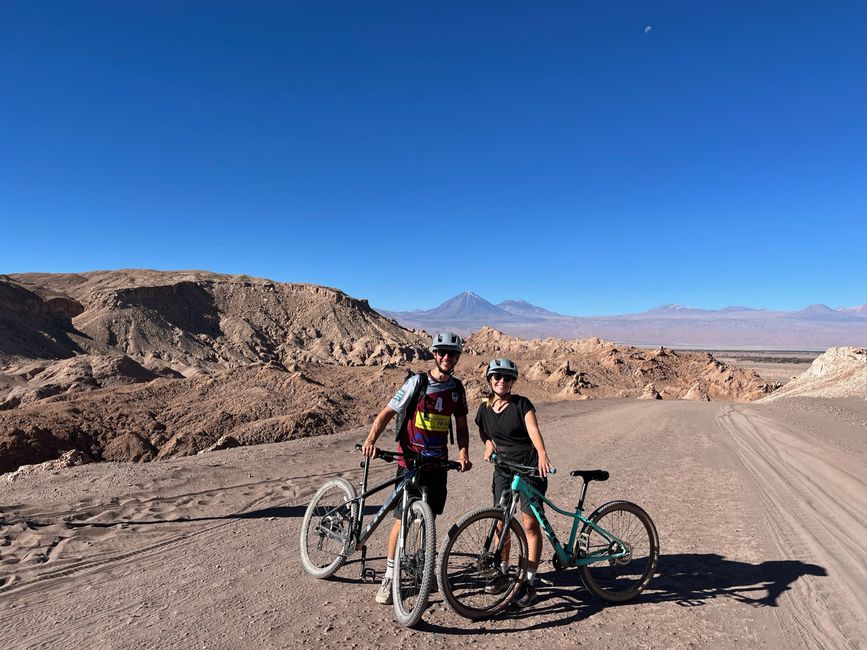
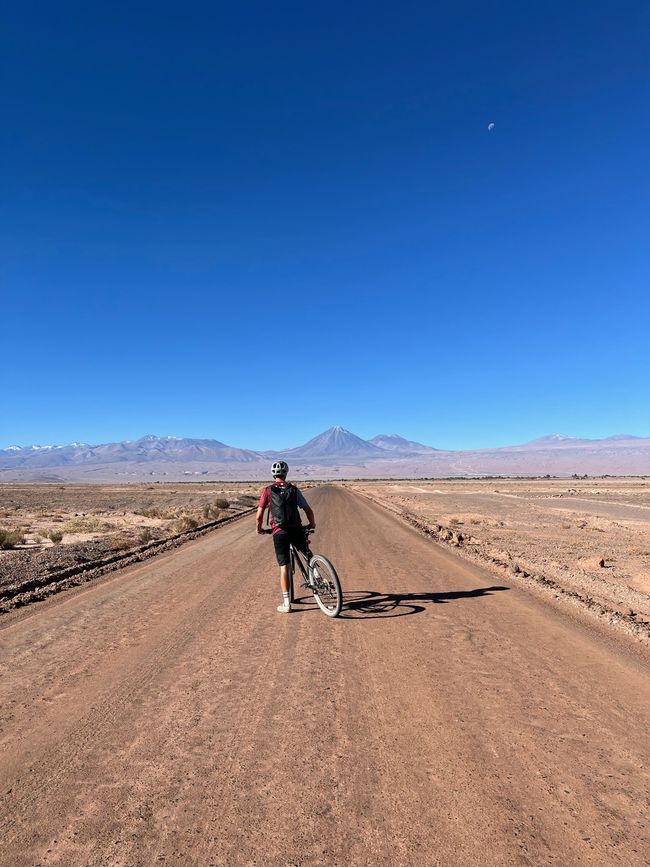
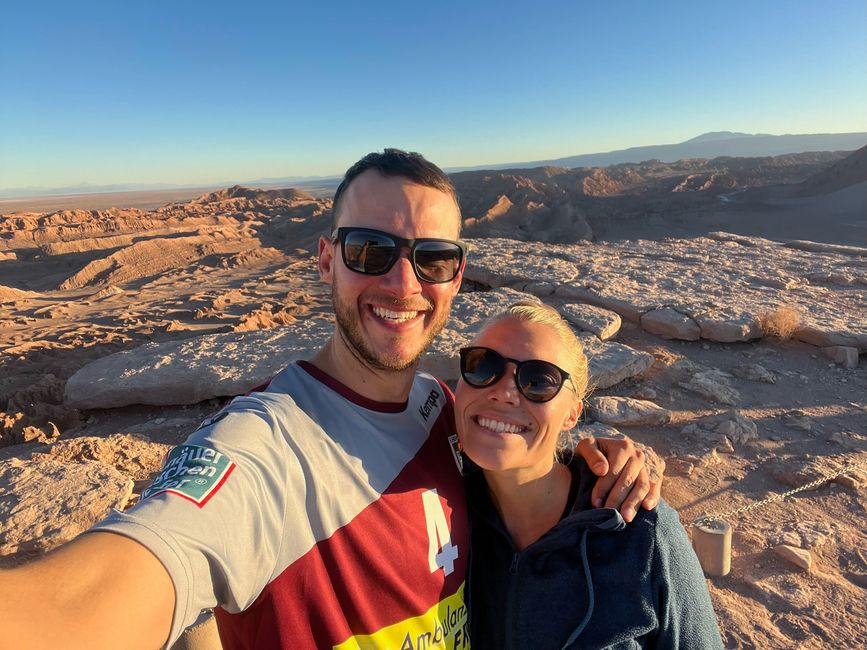
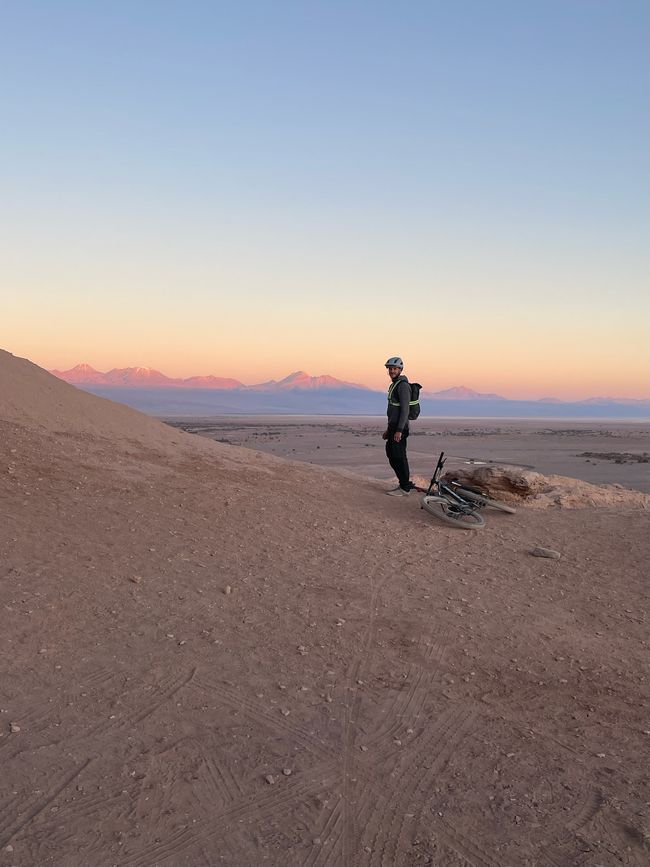
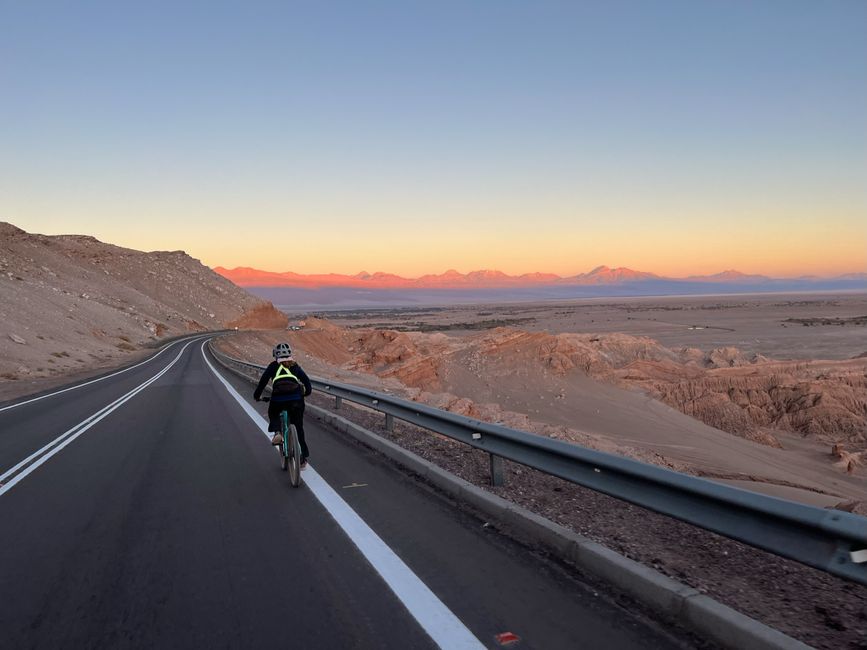
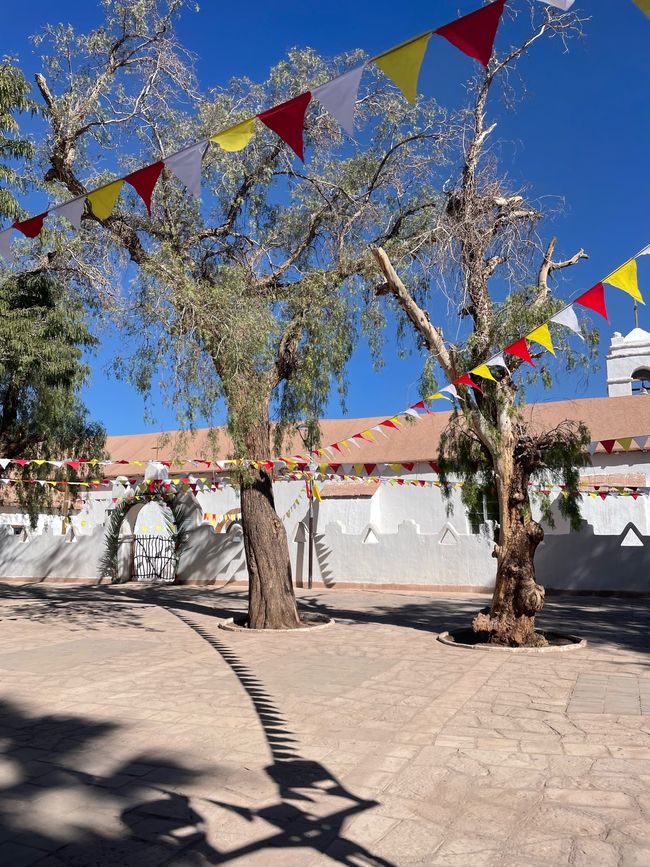
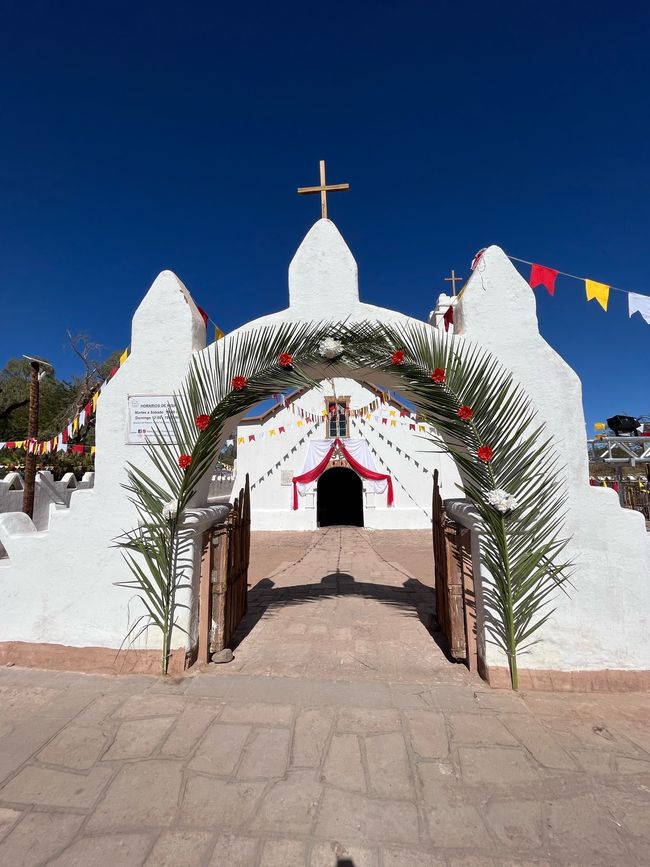
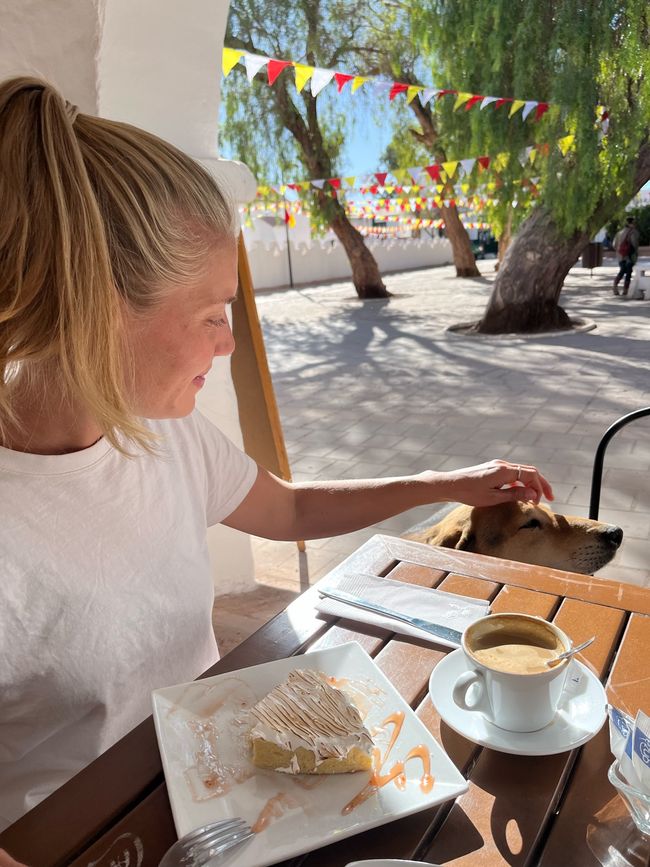
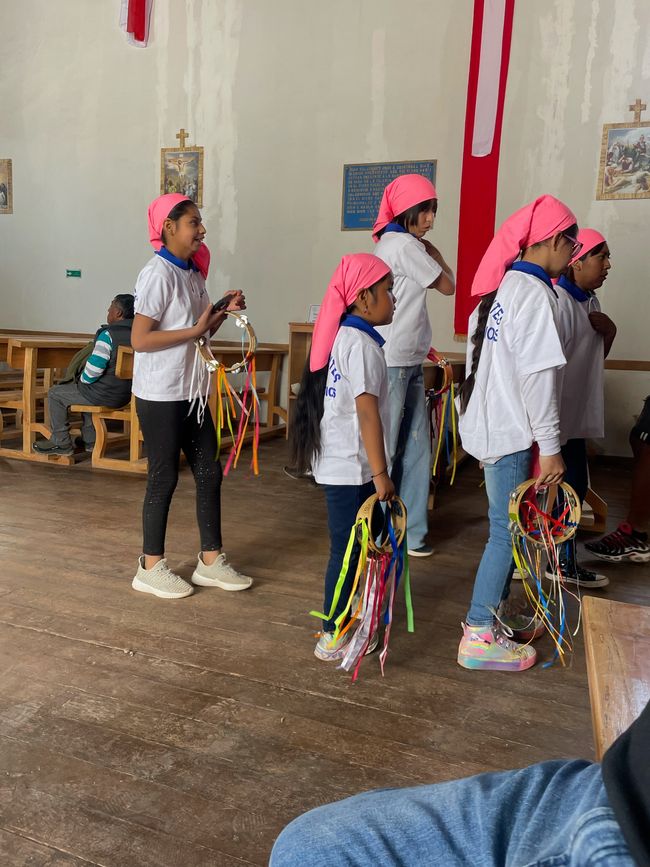
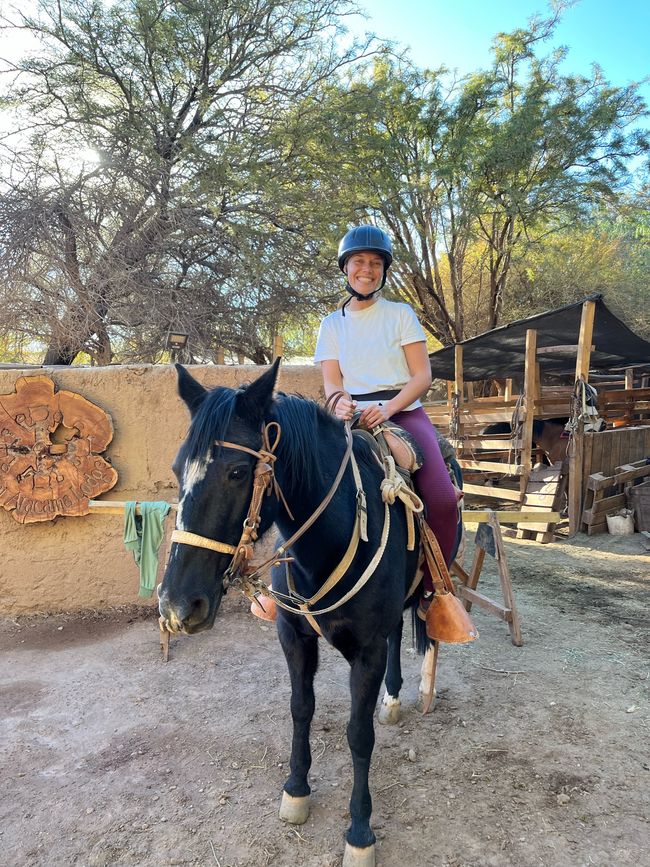
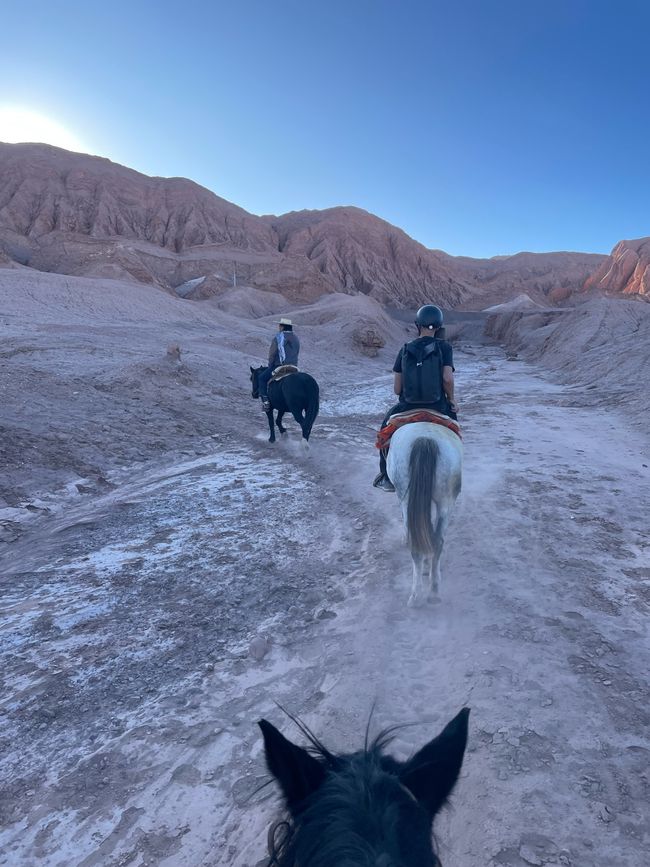
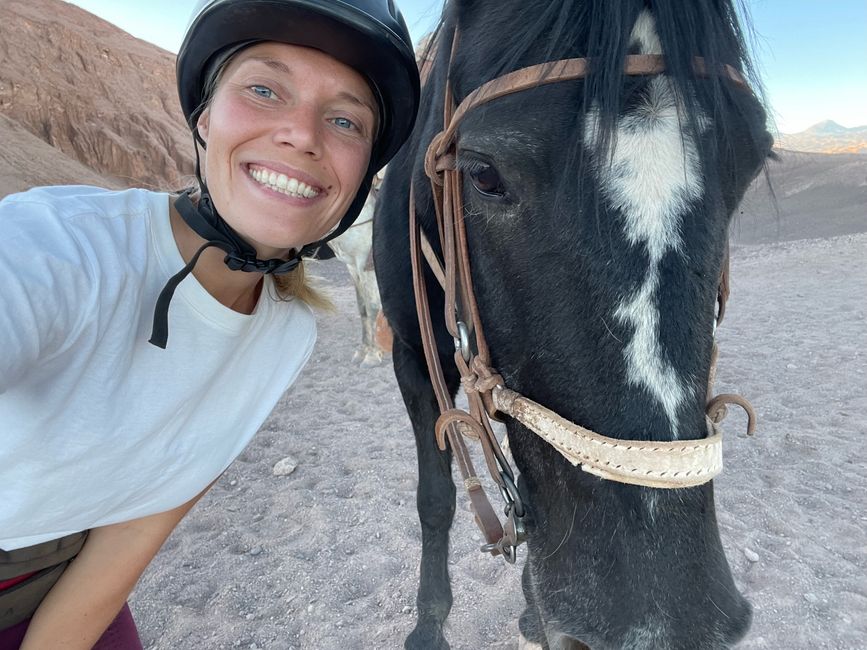
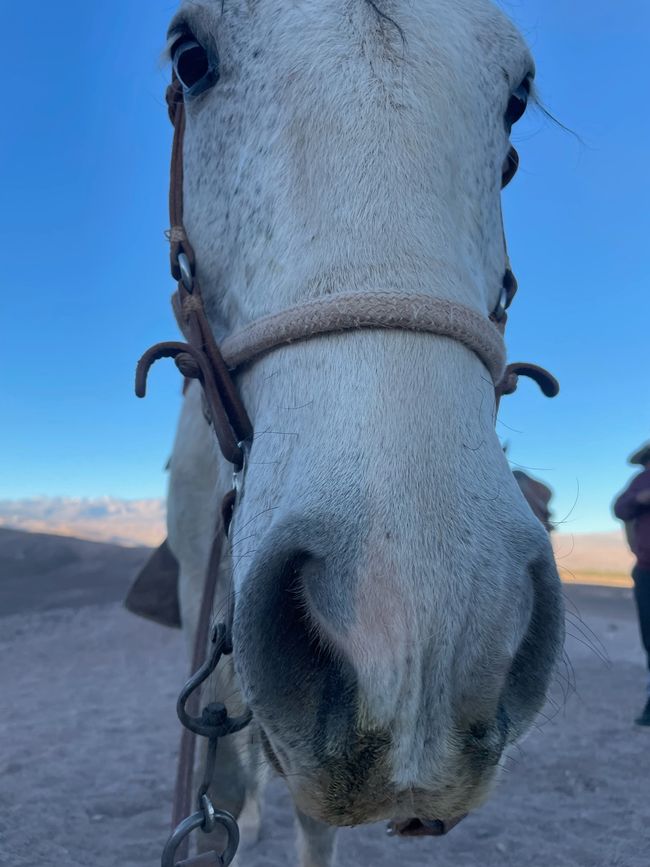
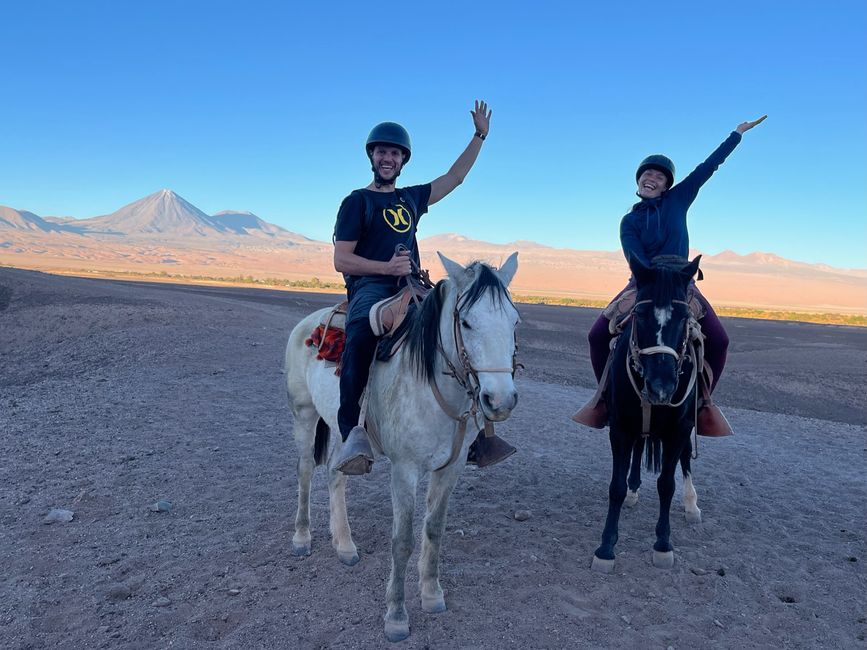
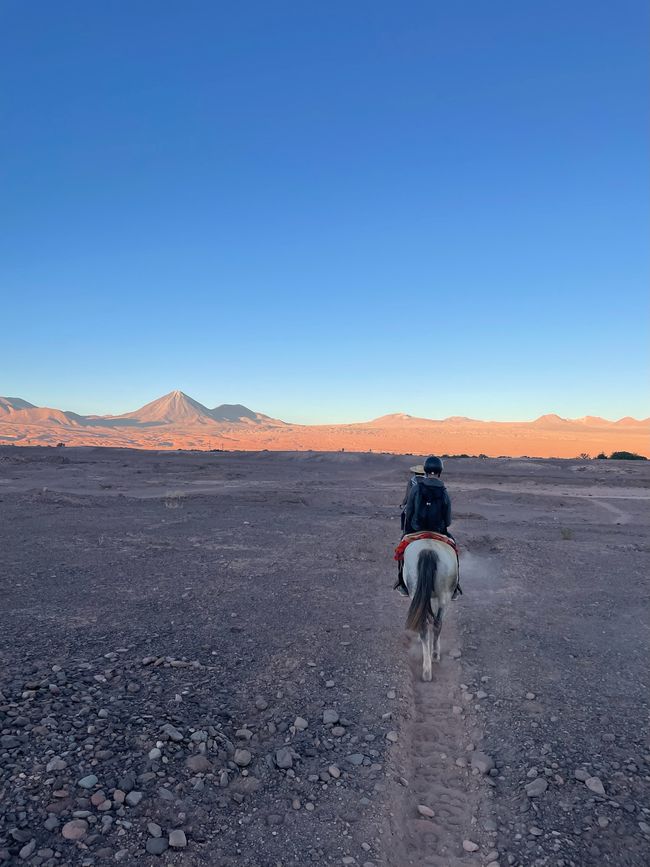
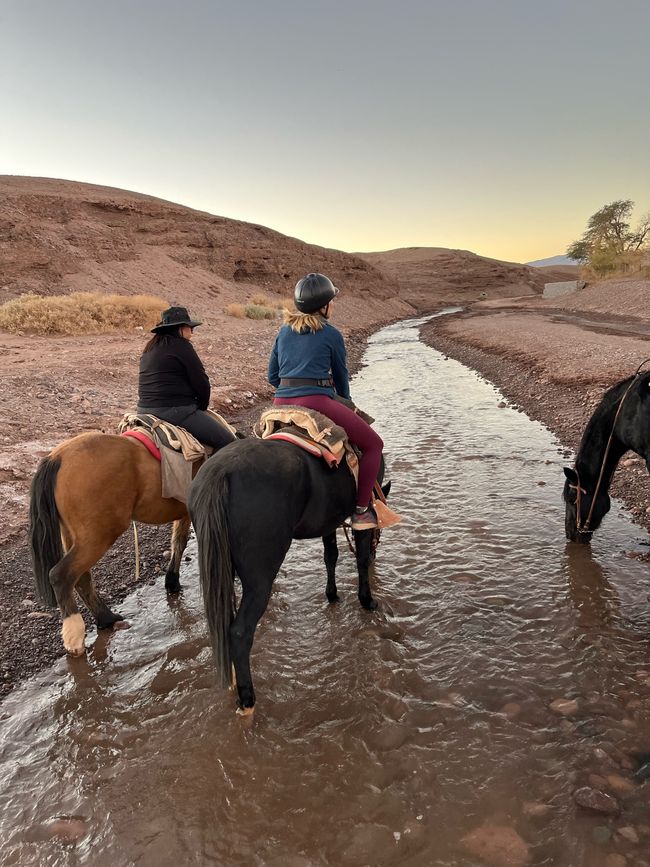
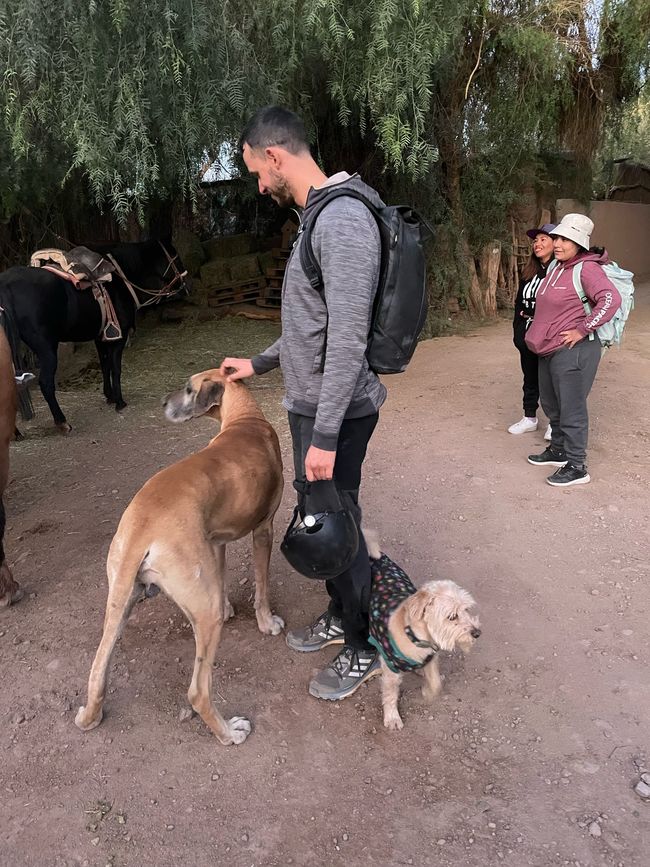
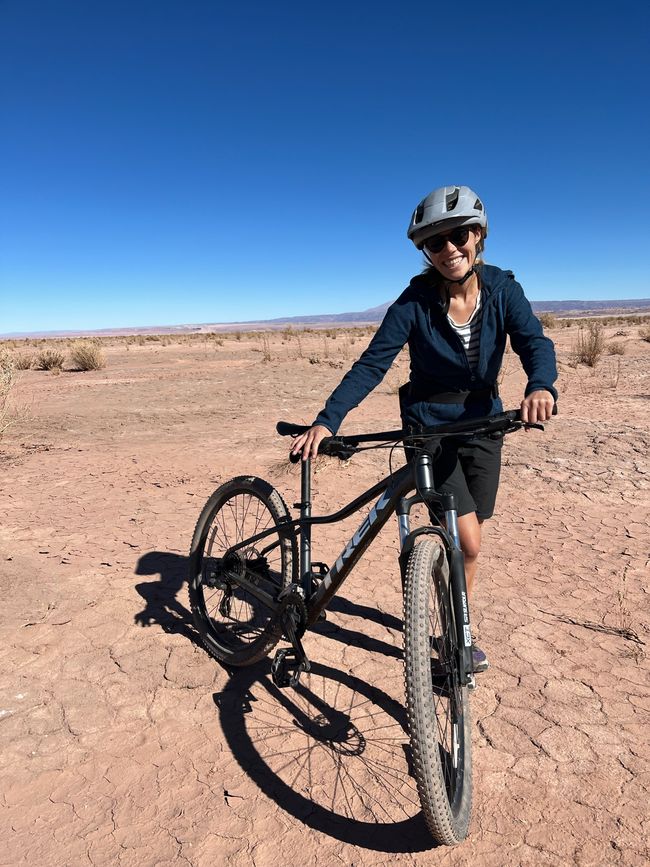
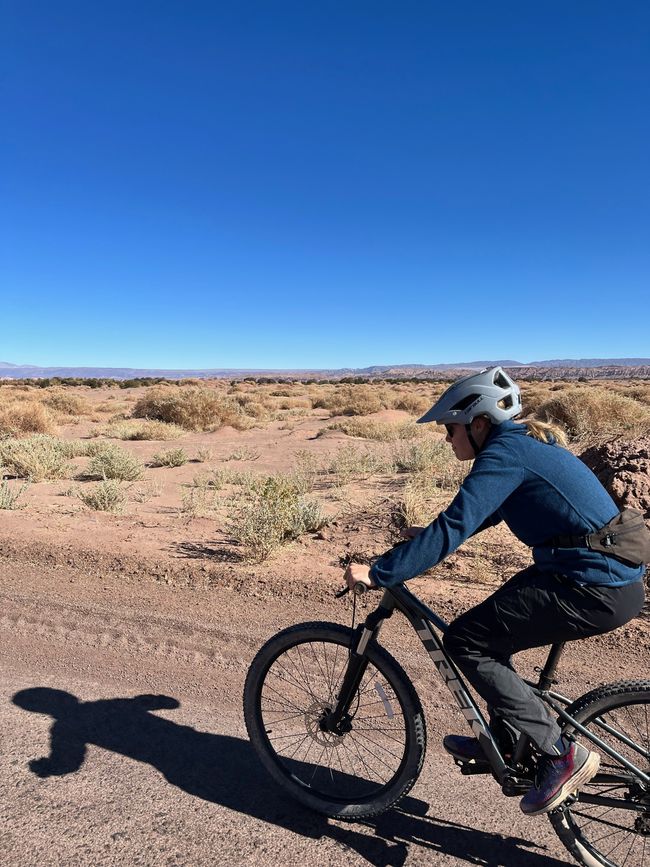
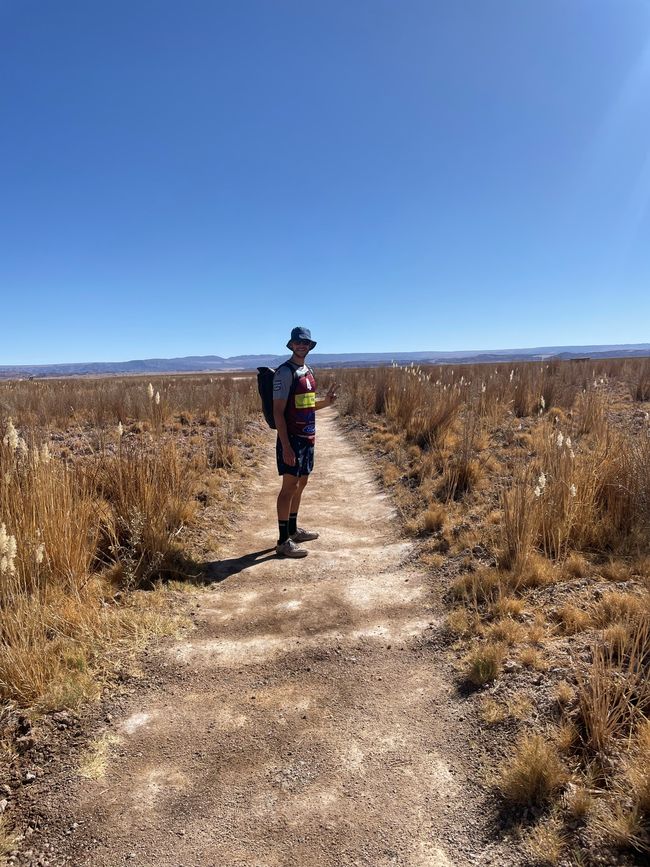
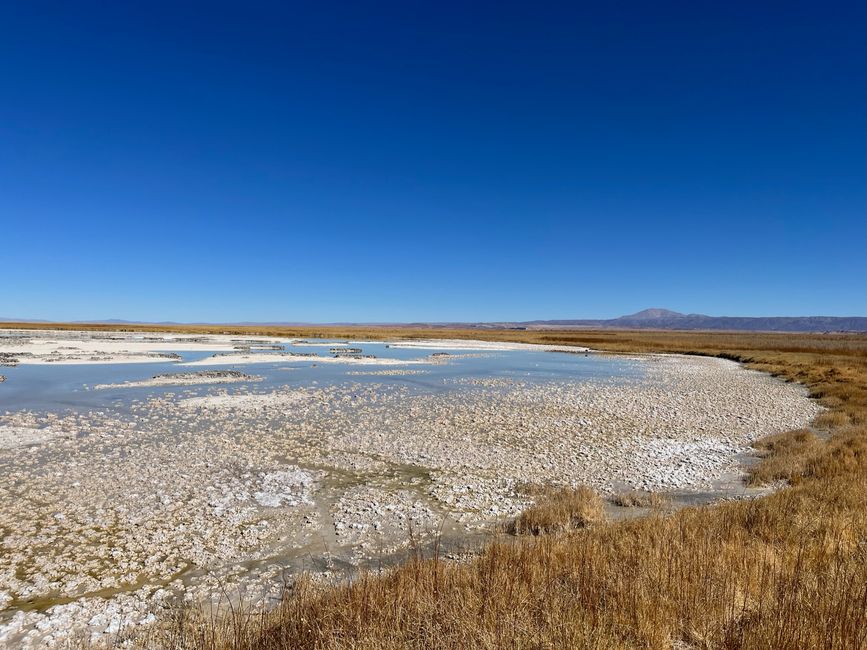
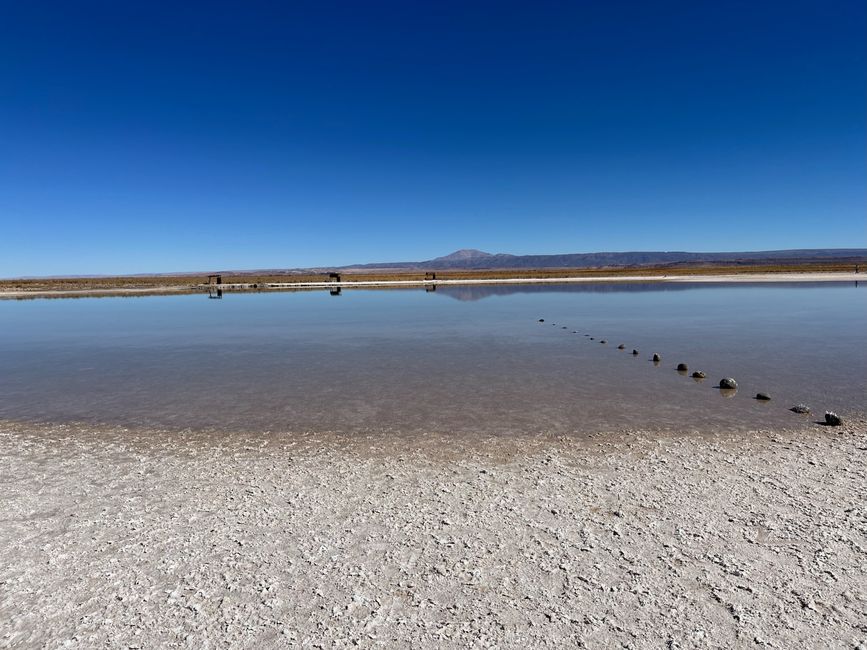
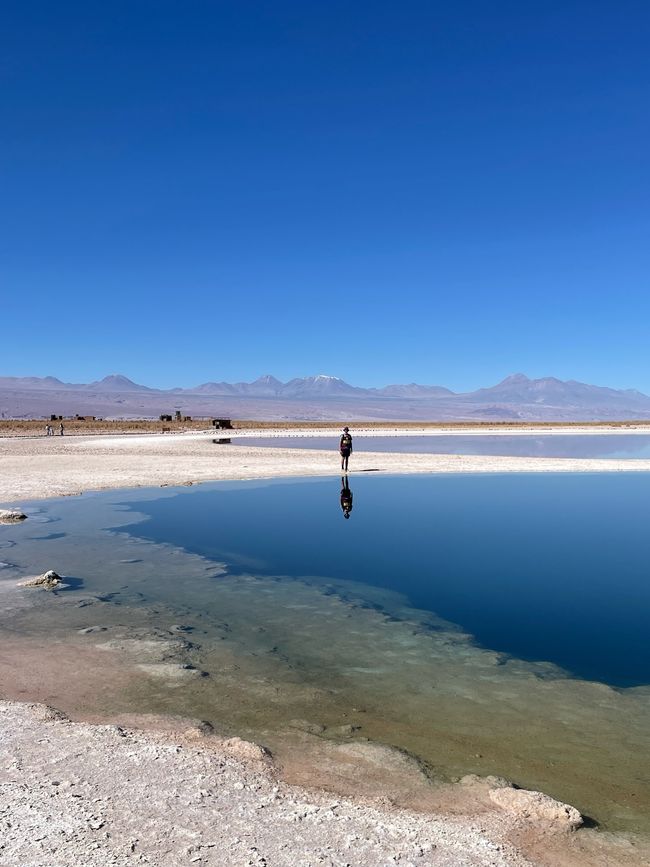
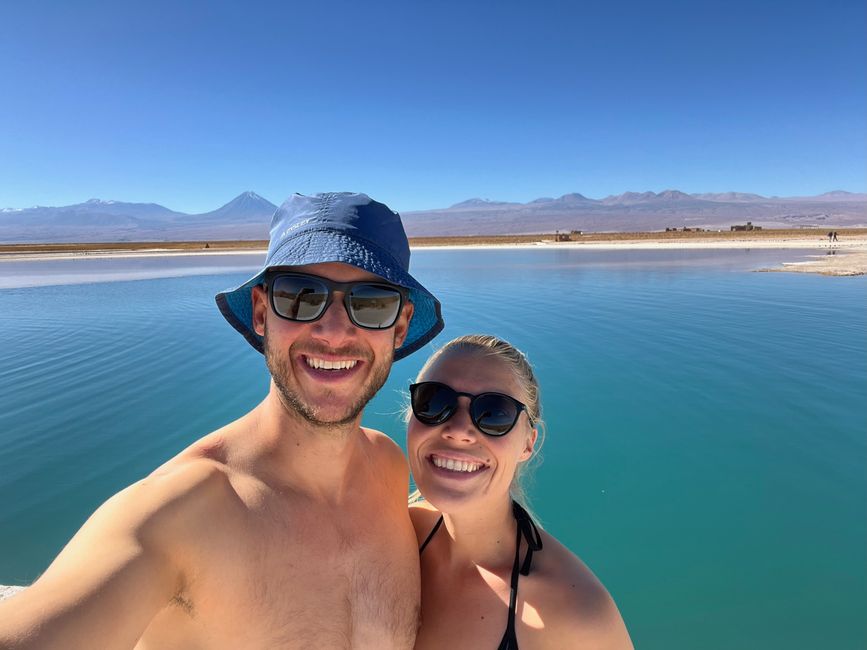
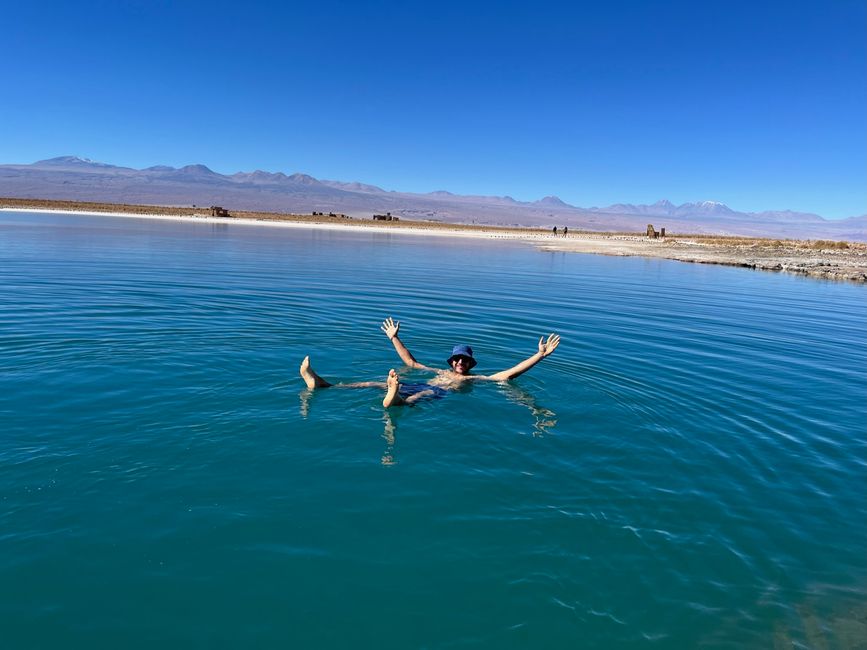
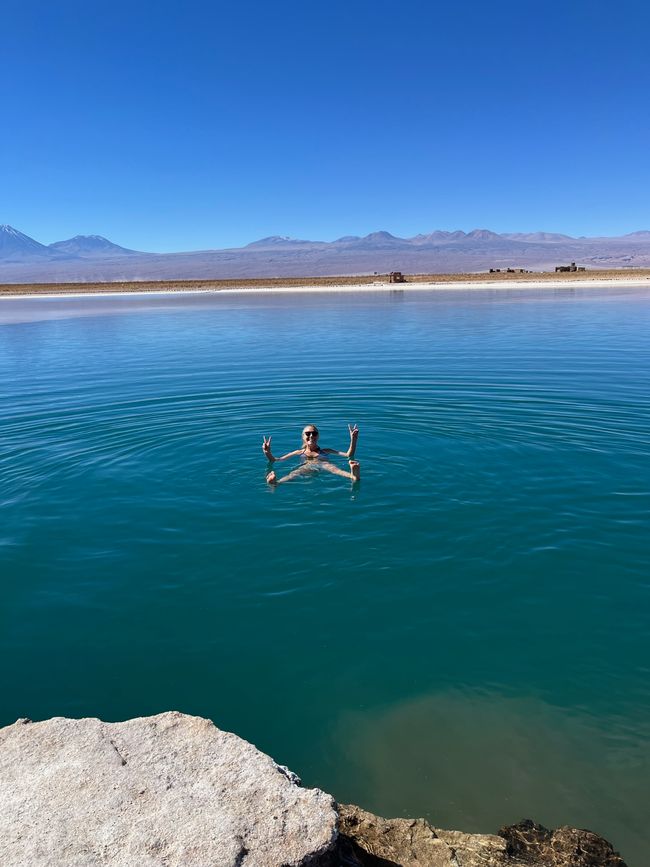
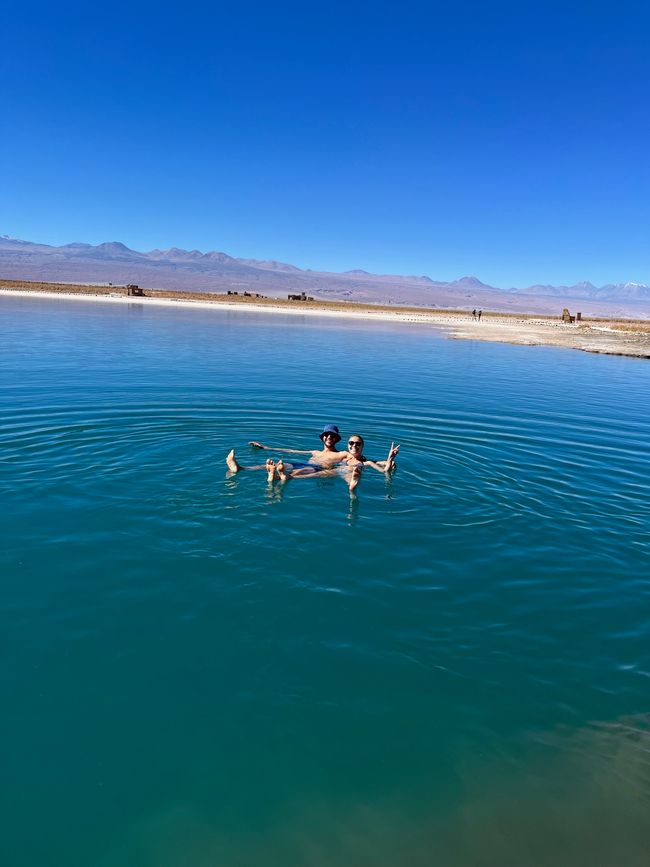
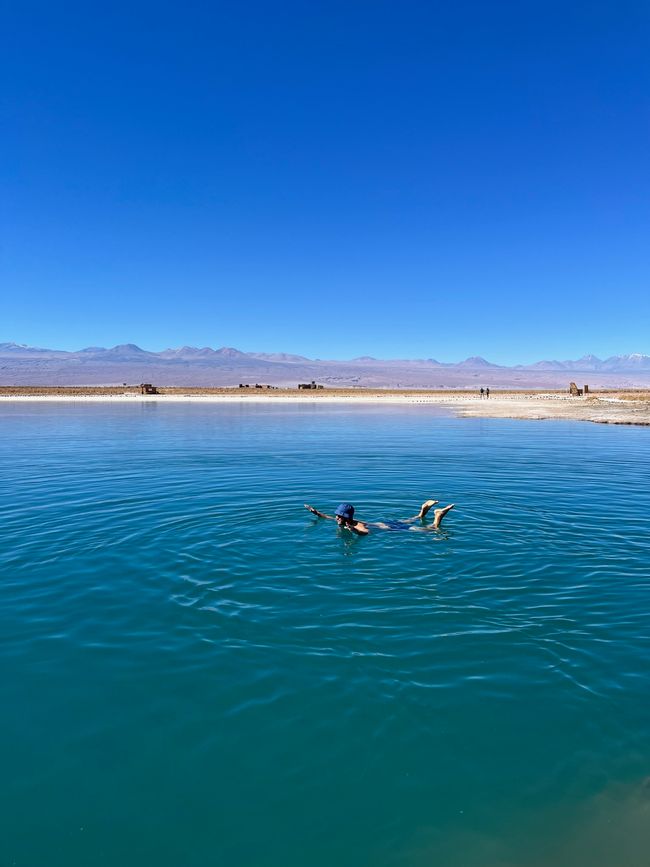
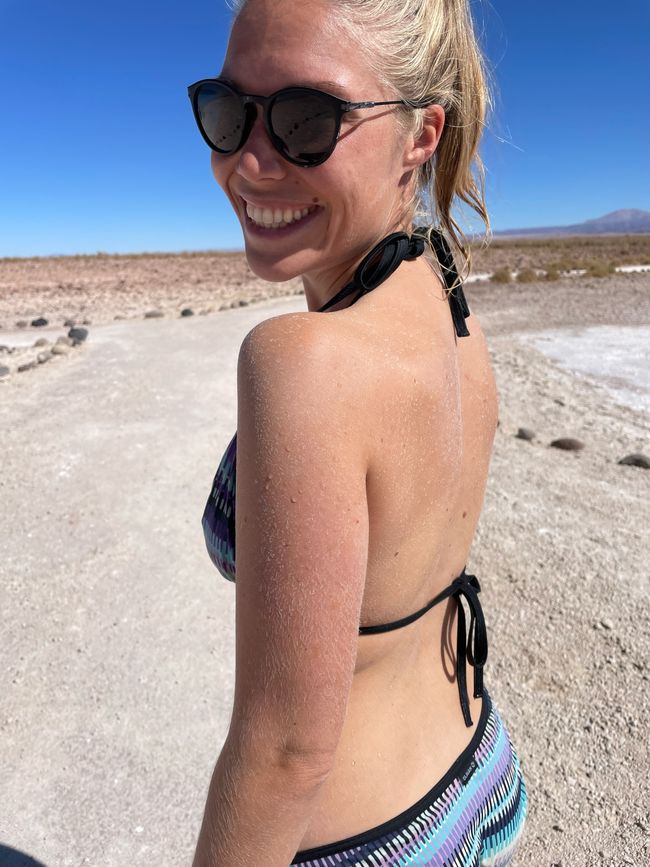
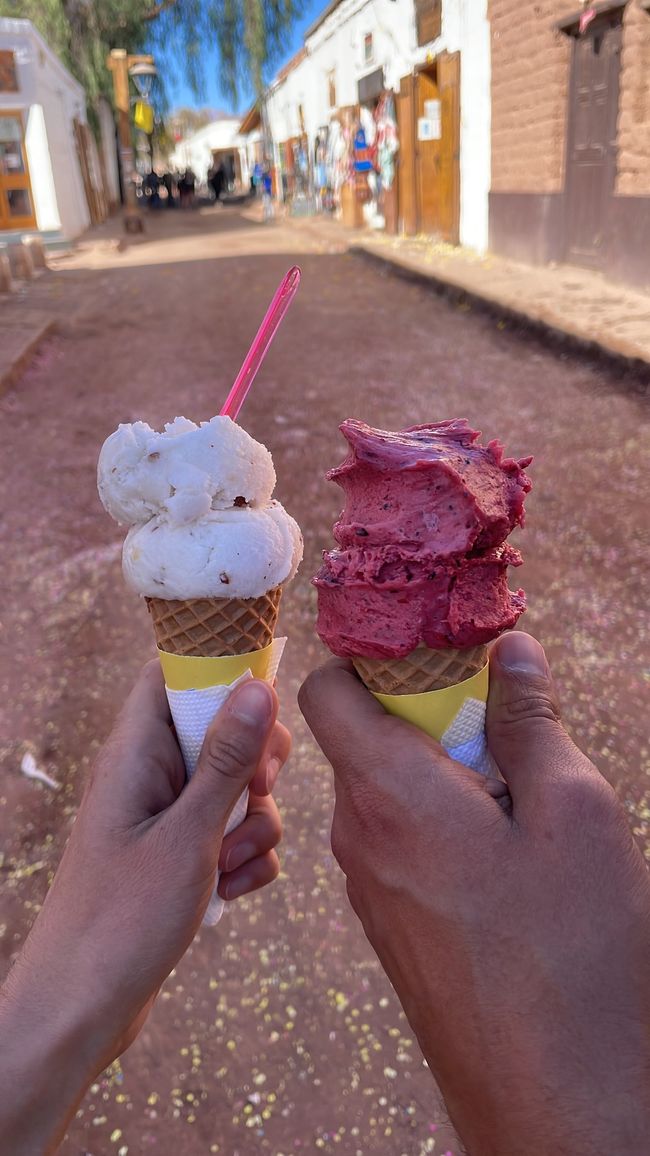
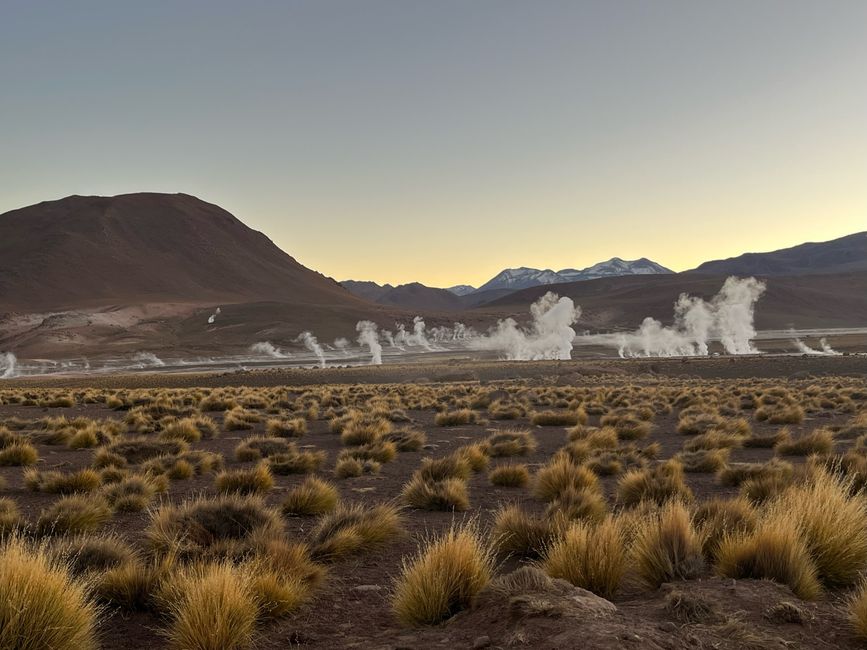
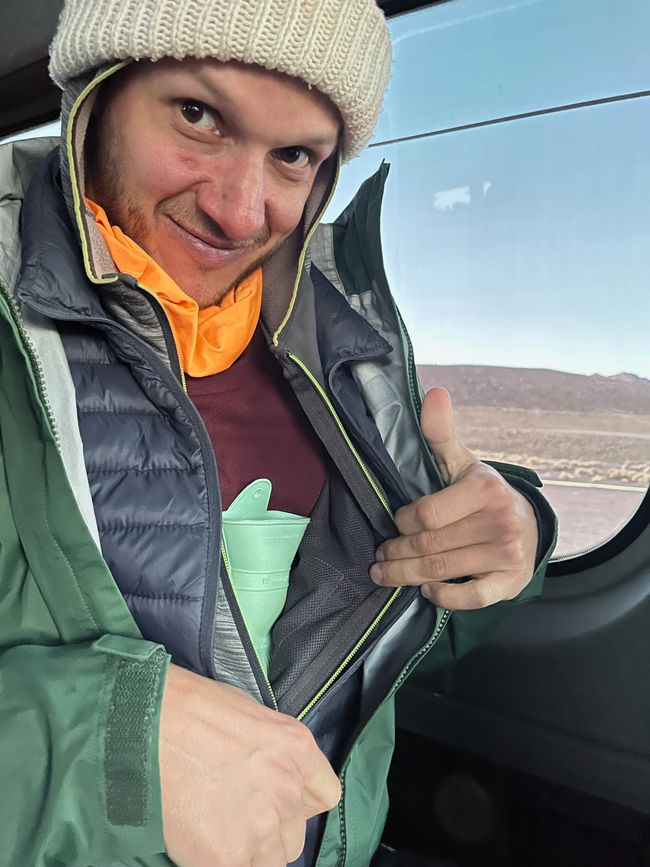
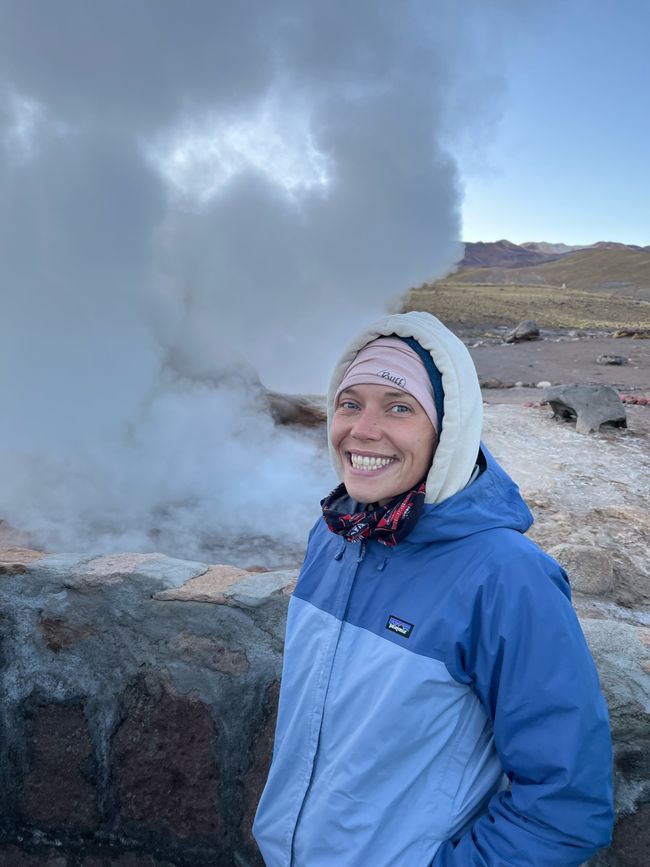
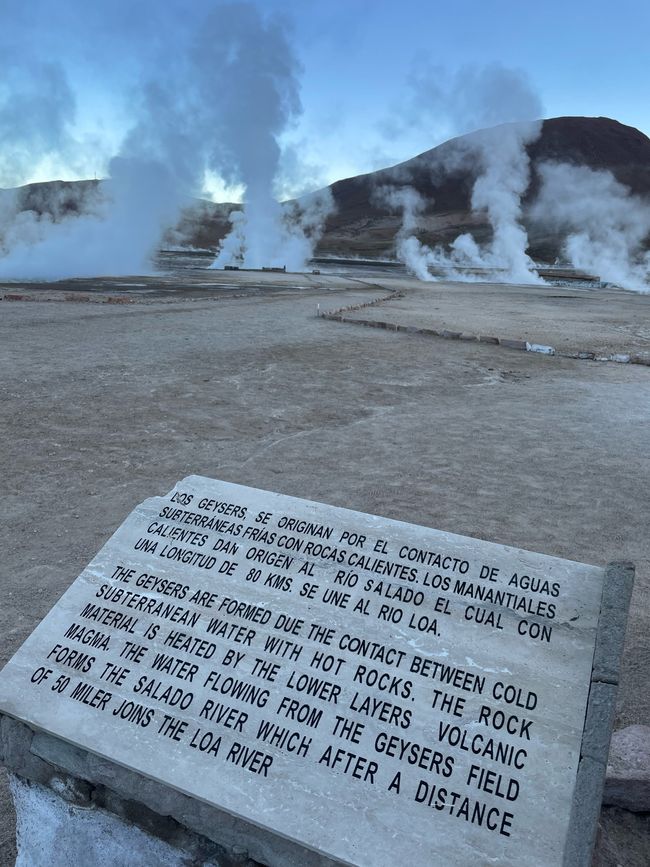
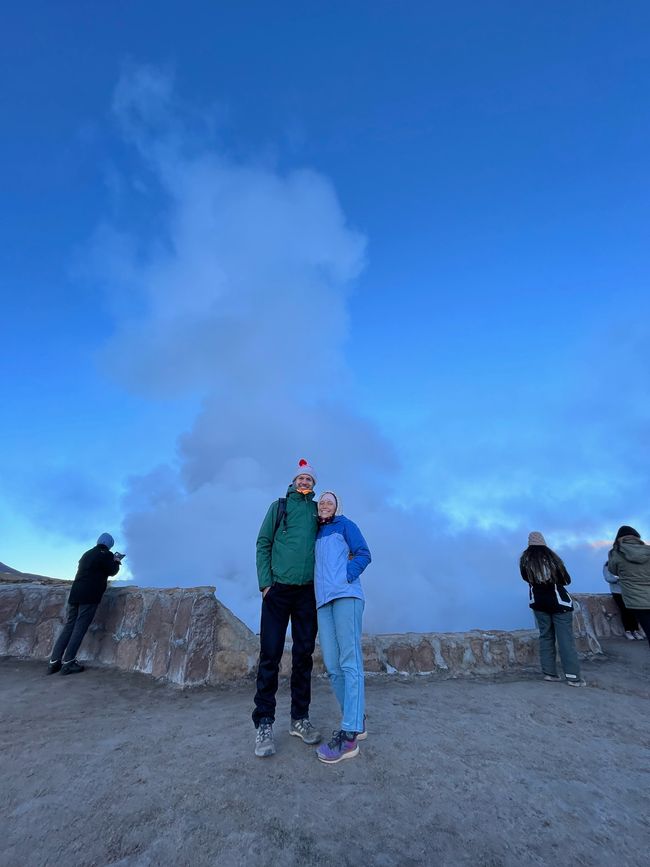
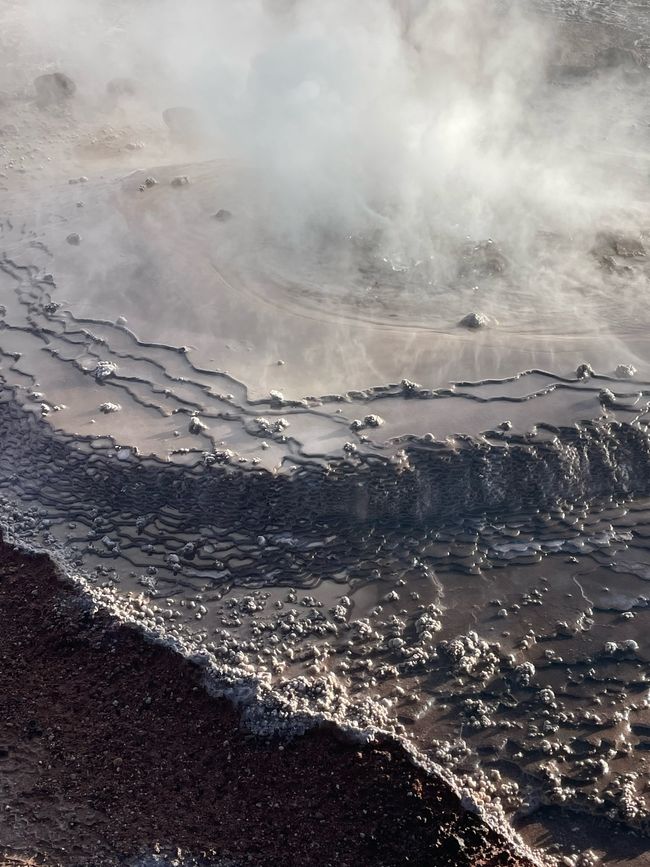
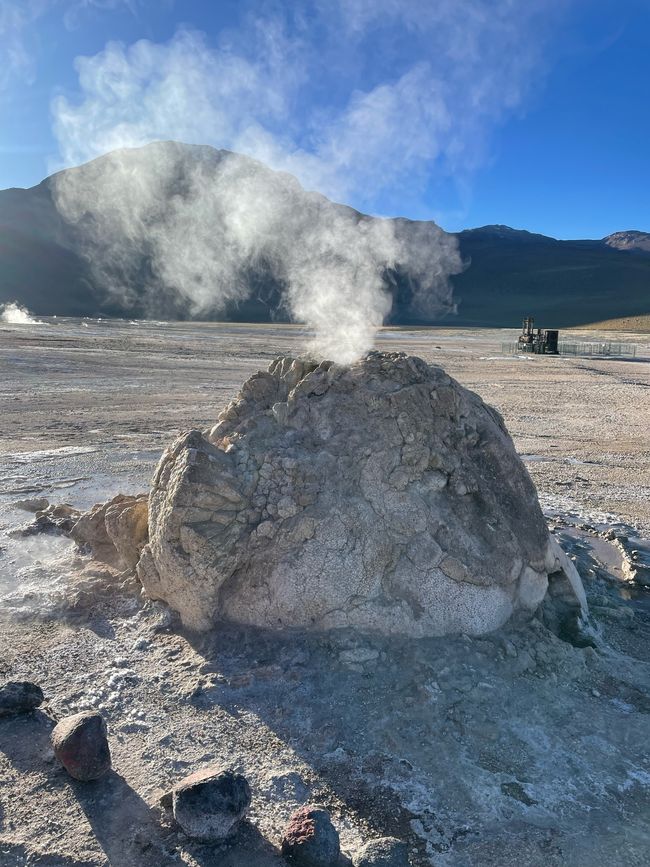
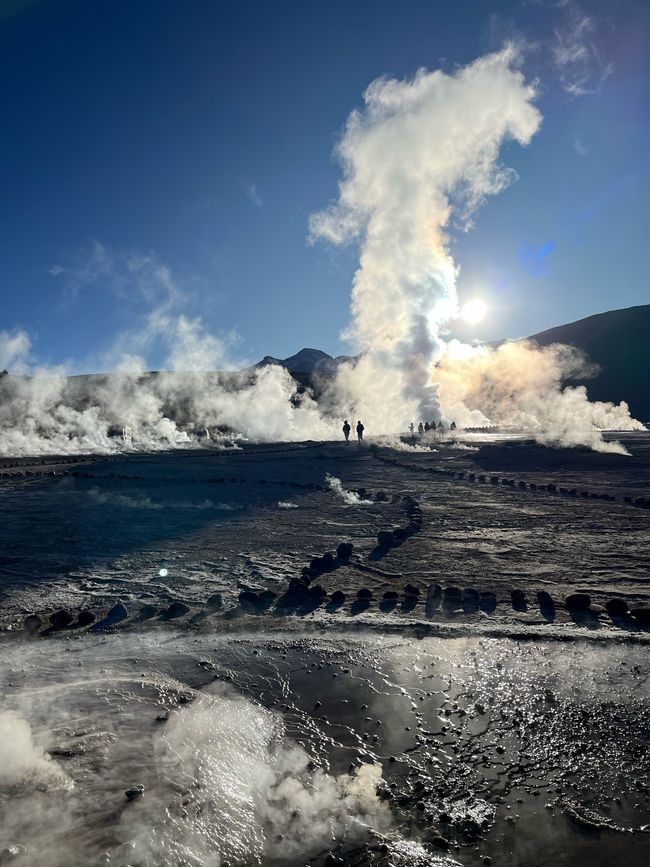
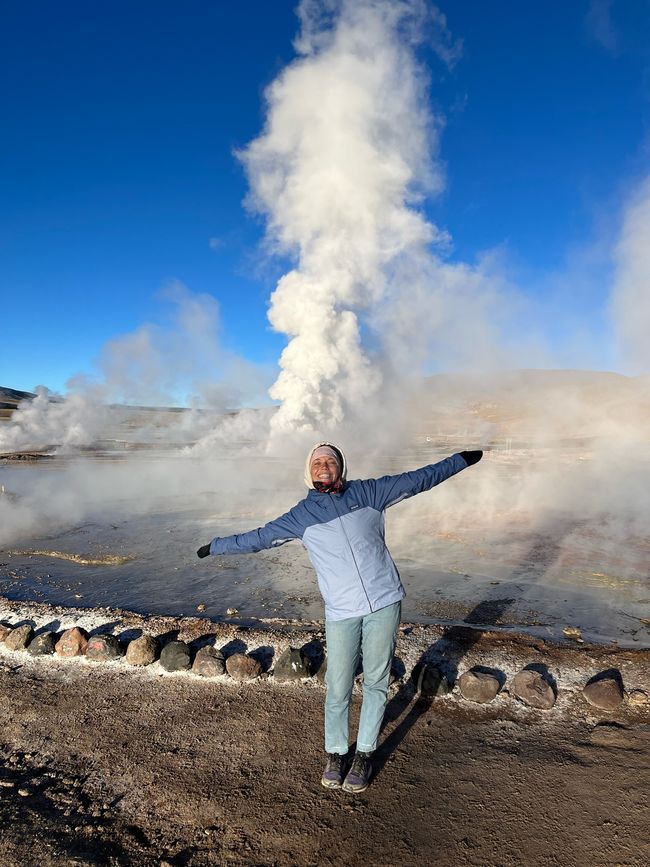
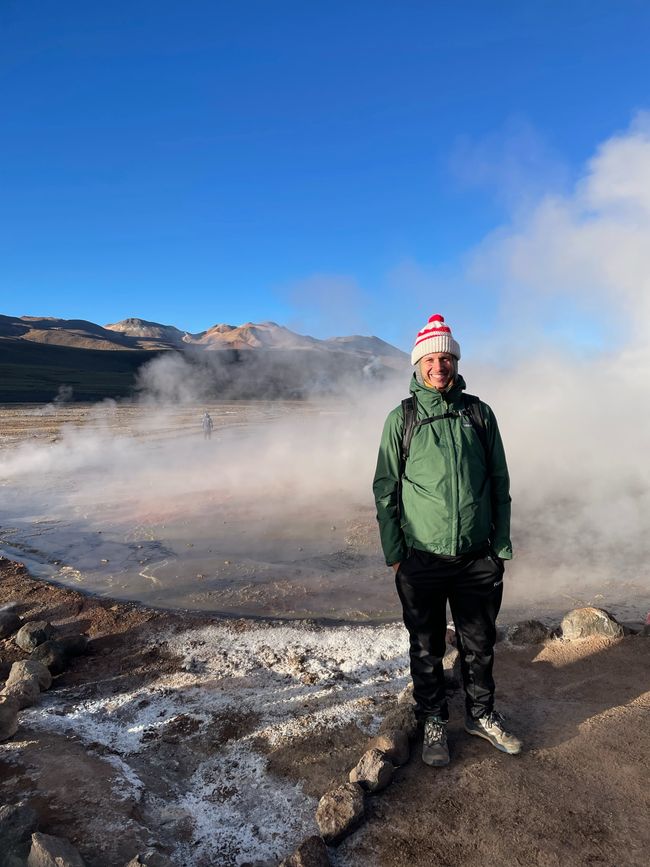
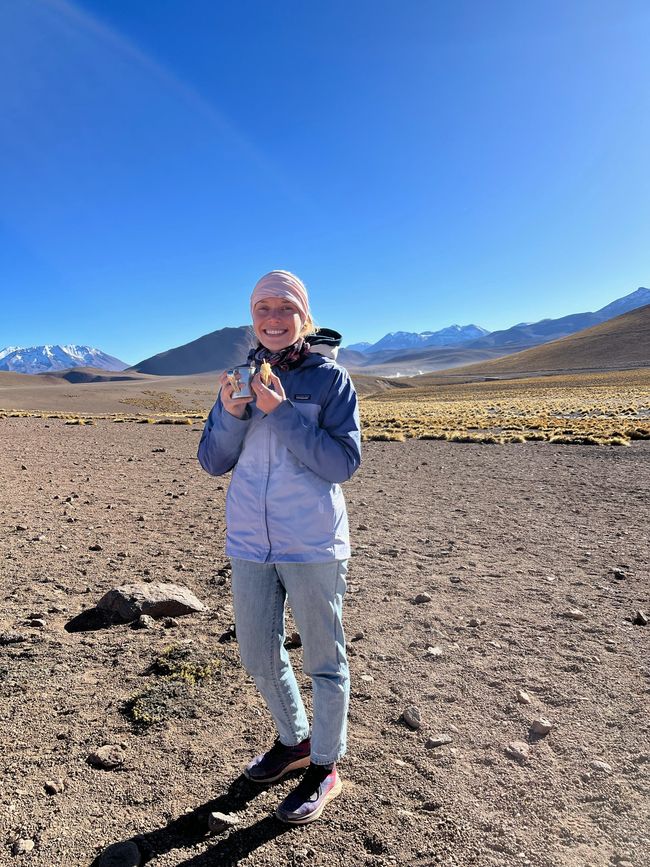
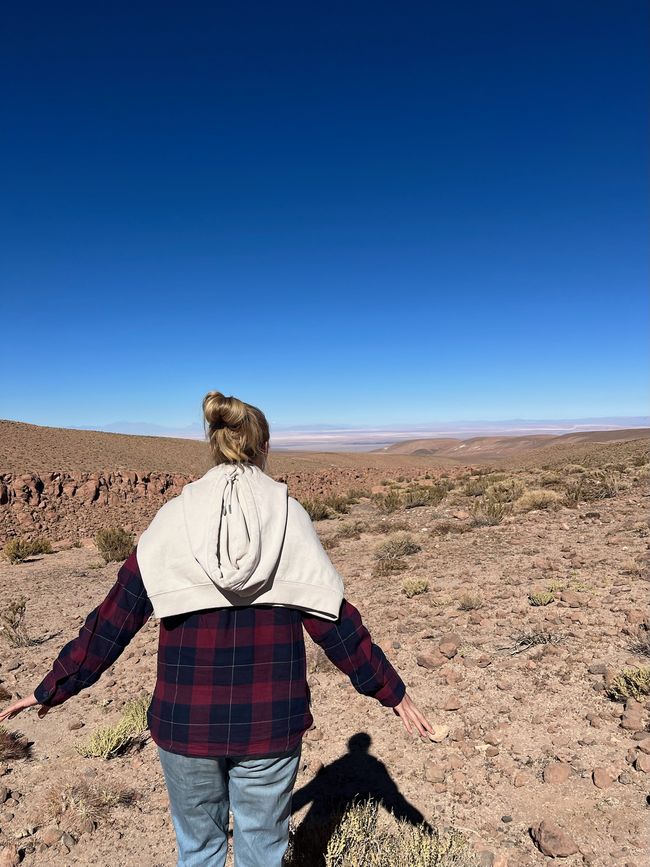
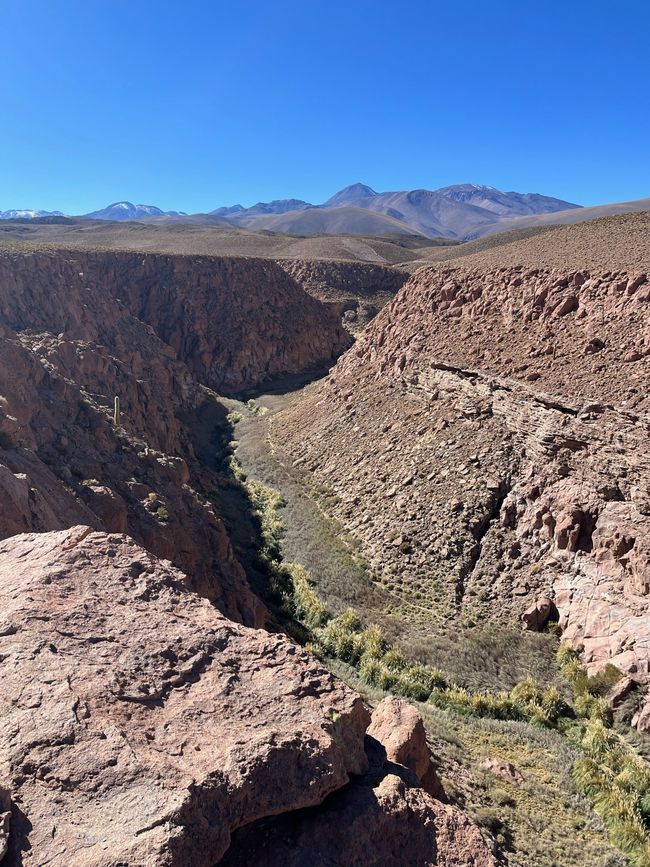
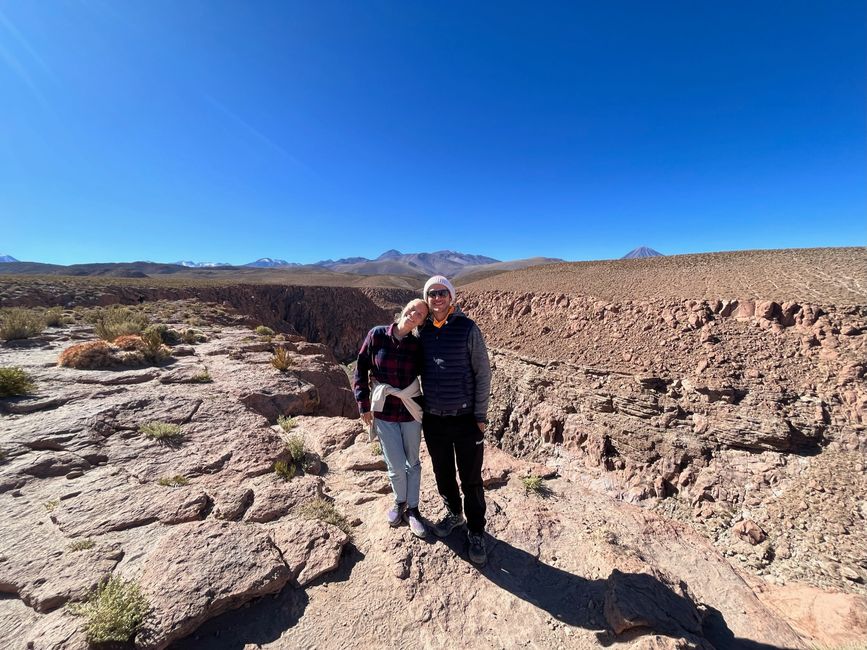
समाचार पत्रिका के लिए सदस्यता लें
Our next destination was San Pedro de Atacama, where we spent a total of about 5 hours on two buses. The small town is located at 2400m in the middle of the desert near the border with Bolivia and is a true oasis. There was really everything here that a tourist could desire. In addition to various travel agencies, there were many different bars and restaurants - even a really good vegan one! - a spa, ice cream parlors, a French bakery, and a zero-waste store. Totally crazy in the middle of the desert. Arriving at our beautiful hostel, we were greeted by Don Gustavo, a funny guy who called us "the Philips" from then on, apparently he couldn't remember Jana's name 😄 Fortunately, our room was equipped with an electric heater and a thick blanket, because even though it reached sunny 22 degrees during the day, the nights were bitterly cold. Here, too, the air was very dry, just like in Antofagasta, but the sky was always clear.
On our first day, we explored the beautiful town center of San Pedro and booked three tours for the coming days at one of the many agencies. We were bombarded with offers, but in the end, we chose a small travel agency where a Brazilian man worked, who often switched to Portuguese. We only understood half of it, but he was very nice and the offer was good 😄 For the evening, we went stargazing outside the city. Bundled up, we were first told about the importance of the stars for the indigenous people of the Atacama Desert and various constellations were explained, such as the Southern Cross, which always points south. Then we were allowed to observe various stars through the telescope. And then we looked at the moon up close, which was really impressive! To warm up, we had some cookies, hot tea, and a Pisco Sour at the end. This is a famous drink from Chile (if you ask the Chileans), but actually it comes from Peru (if you ask the Peruvians). It was delicious, had a strong kick, and warmed us up nicely from the inside.
For the next day, we rented mountain bikes to explore the Valle de la Luna on our own. It's called the "Valley of the Moon" because it sometimes looks like the moon here. The conditions are apparently similar to those on the moon, which is why a prototype of the Mars Rover was even tested here. It was sometimes strenuous to cycle uphill, but above all, the view was breathtaking. We could see many volcanoes and mountains, one of which was particularly impressive, the Licancabur Volcano, which is right on the border with Bolivia. Since we didn't arrive with a guided tour, which only started in the afternoon, we had many of the places almost to ourselves. In between, we went on a few hikes along the dunes, mountains, and a former salt mine. The valley is located in the Cordillera de la Sal (Salt Mountain Range) and it almost looks like there is snow lying in some places. We were amazed at how quiet it was in the desert, although we could see other people walking and talking, we could hardly hear a sound. When we reached the end of the valley, we made our way back. We were recommended one last stop for the sunset at the entrance. What was not mentioned was the steep ascent that took us 4 km uphill to the viewpoint. Together with the previous tour, it was really exhausting at that altitude. The actual sunset was not the highlight, but rather the colors that spread over the surrounding mountains. It was really beautiful and once again looked like a painting. We also met Robert from Nice there, whom we had met on the penguin tour in La Serena and who happened to be in the same hostel as us again. So Jana could refresh her French once more.
On the next day, the festival in honor of San Pedro and San Pablo began, which is why the whole town was decorated and various dance groups hopped through the church and the town. In the afternoon, we went on our second booked tour, this time on horseback. We were a larger group than on Easter Island, and due to the rocky and uneven terrain, we mainly walked, only trotting up the small hills eagerly. The horses were really well-behaved and actually listened to our commands. Philip had a very calm, slightly absent-minded gelding named Flamenco, and Jana had a slow mare whose name translated to something like "annoying woman" 😄 Our ride took us to the Valle de los dinosaurios, which is called that because the surrounding mountains look like dinosaurs. At the end, the horses had a drinking break in the river, and then we made our way back home. In the evening, everything hurt, especially our bottoms. Before going to bed, Gustavo asked us, as he did every day: "Philiiiips! Mañana, tienes tours?" to find out if we would be on the move the next morning or if he should prepare breakfast. And this one time we could answer with yes.
Because we were picked up very early at 5 am to drive to the geysers of the El Tatio volcano. It is the third largest and highest geothermal field in the world and certainly one of the coldest, as it was icy -10 degrees. In anticipation, we wore almost everything our backpacks could hold. 3 layers of socks, 1 pair of socks as gloves for Jana, 3 layers of pants, and a proud 8 layers on our upper body, one of which was the hot water bottle for Philip 😄 Despite all our efforts, we were cold, but it was worth the shivering. There were many geysers that shot their steam high into the air. The water has a temperature of 86°C (the boiling point of water at this altitude) and meets the icy air in the early morning hours, which is why the steam columns are particularly high and impressive at this time. So we walked through the crater, past numerous and sometimes really large geysers, and waited for the sun. As it appeared over the edge of the crater, it immediately got warmer and our freezing feet slowly thawed. Our guide explained to us that the water is particularly rich in minerals and it is even suspected that the first microbes on Earth originated in one of these geysers. After walking through the geyser field, we drove out of the crater onto a plain with a beautiful view, where we saw vicuñas and got our well-deserved breakfast. We had delicious French baguette, which we unfortunately hadn't discovered before and instead had to eat dry rolls every day. ☹️ We were told that vicuñas are the wild ancestors of alpacas and, like llamas and alpacas, they can live at altitudes above 4000m. On the way back, our guide listened to pan flute music on repeat, or played his own pan flute while chewing coca leaves, which help with symptoms of altitude sickness. Overall, he was a quirky guy, but very nice and explained a lot to us. We stopped at two viewpoints, from one of which we could see the Salar de Atacama, a mainly dry basin made of salt and lithium, on the edge of which San Pedro is located. The Salar also includes the Laguna Cejar, which we visited, and the Laguna Chaxa, where you can observe flamingos. We want to go there next time.🦩 We also saw a canyon with a river and lots of greenery in the middle. Then we headed back home, where we had already checked out early in the morning. But we were still allowed to stay in the common areas and spent the day there. For lunch, we had delicious spaghetti at the main square in San Pedro, unfortunately accompanied by the very persistent street musician who sang his heart out there every day and actually presented his own CD ?! Although it wasn't beautiful, unfortunately we both had an earworm from it. 🙈
In the evening, we said goodbye to Gustavo and walked to the bus station, because now we're going on the long journey to Peru and Philip's former host family in Arequipa.
Thus ends our time in Chile, which we liked a lot. We saw and experienced many different things, visited the unique Easter Island, and were in the driest desert in the world. The south of Chile should not be overlooked, but unfortunately, it is currently too cold there, so we will put it on the list of places we definitely want to visit in the future - but in the summer. 😉
समाचार पत्रिका के लिए सदस्यता लें
उत्तर
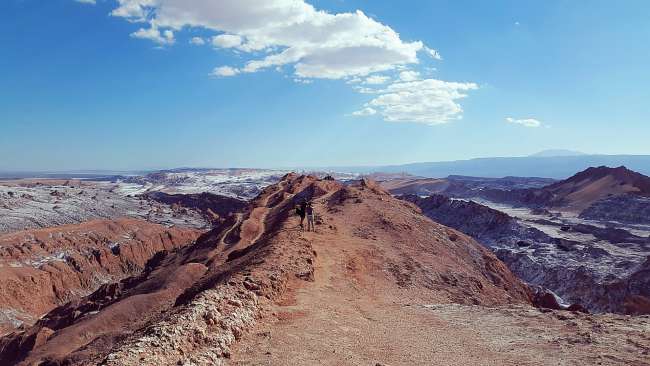
यात्रा रिपोर्ट चिली
